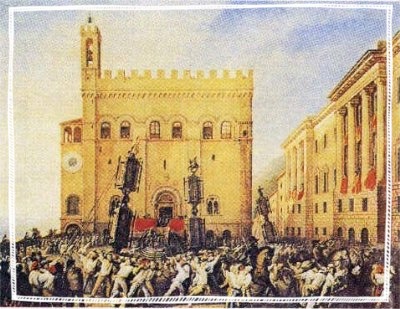 | 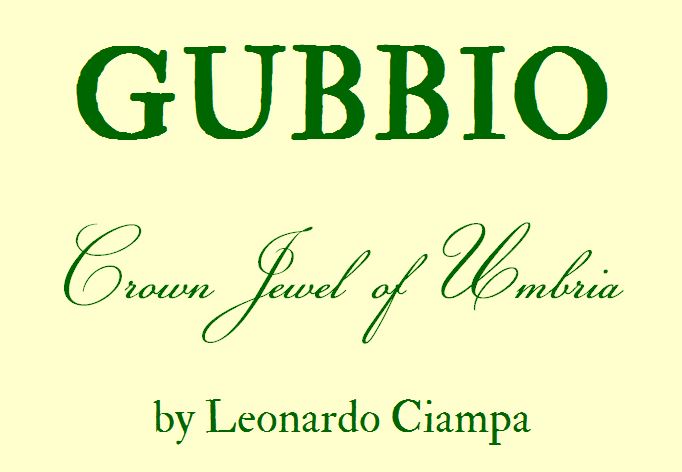 | 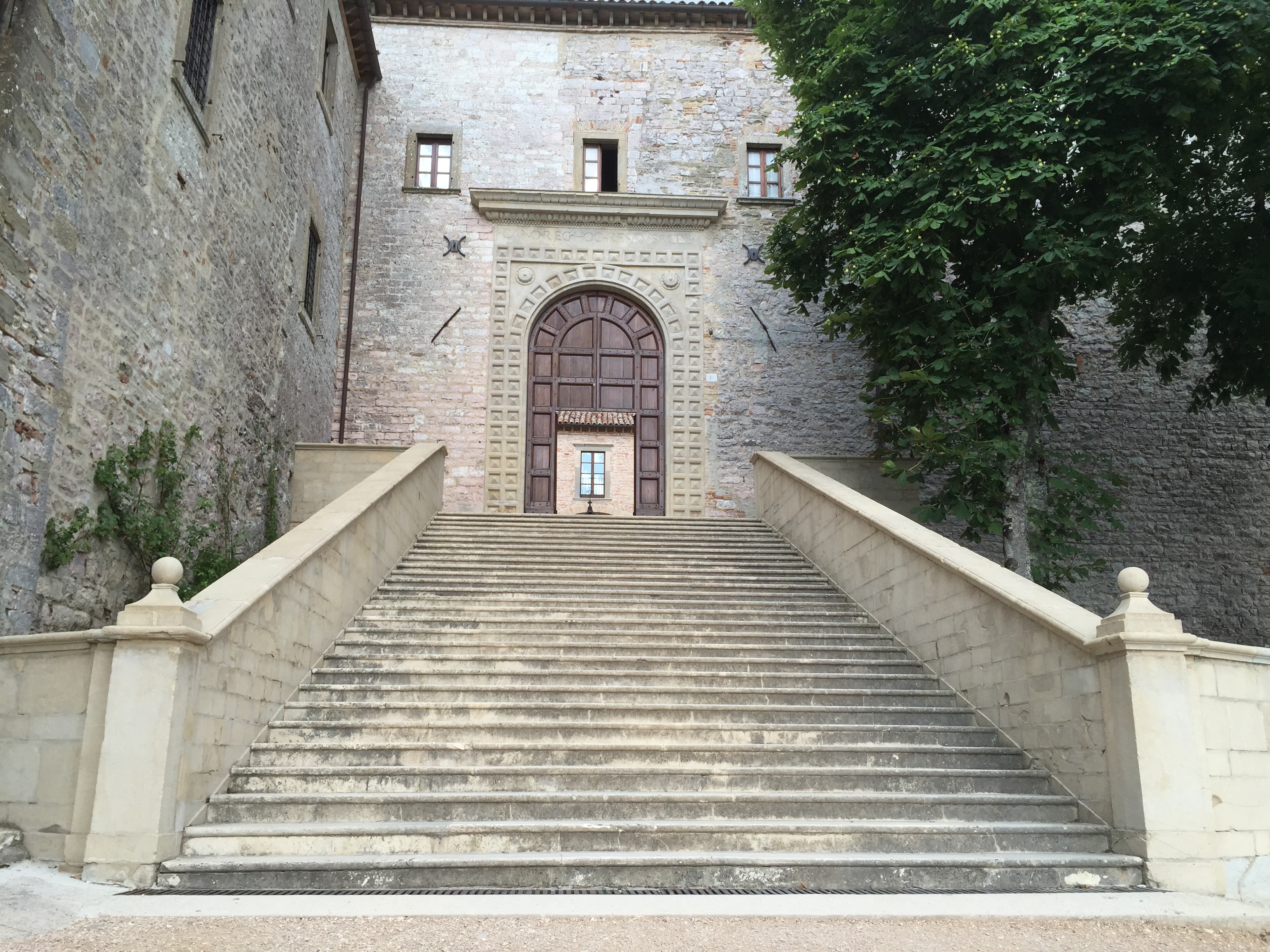 |
GUBBIO
Crown Jewel of Umbria
by Leonardo Ciampa
Maestro di Cappella Onorario della Basilica di Sant’Ubaldo
 |  |  |
Where is Gubbio?
Gubbio is a town (population 33,000) in
the province of Perugia, in the region of Umbria, in Central
Italy.
Why is Gubbio called “the best Medieval city
in Italy”?
The majority of Gubbio is exactly as it
was in Medieval times. Assisi, for example, was 90% destroyed by
World War II, and damaged yet again in the 1997 earthquake. Thus, while Assisi is a beautiful city, it was
“rifatta” or
redone. Gubbio’s old city, on the other hand, is totally
original.
What was St. Francis of Assisi’s connection to Gubbio?
St. Francis lived in Gubbio. In fact, it was there that the famous story of the taming of the wolf took place. And the Church of St. Francis, one of the largest in Gubbio, was the very first church in the world to be named for Francis. Masses were already being said there in the year 1256 – only 30 years after the saint’s death! Gubbio remains one of the stops along the Way of St. Francis and is visited by thousands of pilgrims every year.
Who was St. Ubaldo?
Ubaldo (c. 1084-1160) was the Bishop of Gubbio. Canonized in 1192, St. Ubaldo is not only the patron saint of Gubbio, but is also considered by many to be its protector. In fact, Ubaldo was said to have prevented Frederick I (“Red Beard”) from sacking Gubbio as he did Spoleto. St. Ubaldo’s remains are on display at the Basilica di Sant’Ubaldo, perched high on Mt. Igino overlooking Gubbio.
Why is the Basilica di Sant’Ubaldo considered the “cultural centre of Gubbio,” even though it is high above and away from the centre of the city?
Besides housing St. Ubaldo’s remains, the Basilica also houses the three “ceri,” huge wooden pedestals that are carried through the town on the Feast of St. Ubaldo (May 15). This race of the cerioli (the “ceri-carriers”) is one of the largest and oldest events of its kind, its origins dating back to Medieval times. St. Ubaldo’s tomb, and the three large Ceri, are visited daily by a large number of tourists.
What other treasures are housed at the Basilica?
Besides stained glass windows depicting the life of St. Ubaldo, the Basilica houses several large oil paintings by famous artists, such as Francesco Allegrini.
What are the other most important tourist attractions in Gubbio?
The Palazzo dei Consoli (built 1332-1349) dominates the Piazza Grande, which even today seems massive. Gubbio also has one of the largest remaining Roman amphitheatres. And the colossal Christmas tree, erected each year on the slopes of Mt. Igino, is listed in the Guinness Book of World Records as being the “world’s largest Christmas tree.”
For what else is Gubbio known?
Gubbio is an important center for handmade ceramics. There are numerous artisans who produce world-class ceramics. The finest ceramic maker in Gubbio is considered by many to be Rampini, on Via Leonardo da Vinci. Gubbio is known also for truffles, which are sold in dozens of shops. The dishes in Gubbio’s restaurants are often topped by truffle shavings.
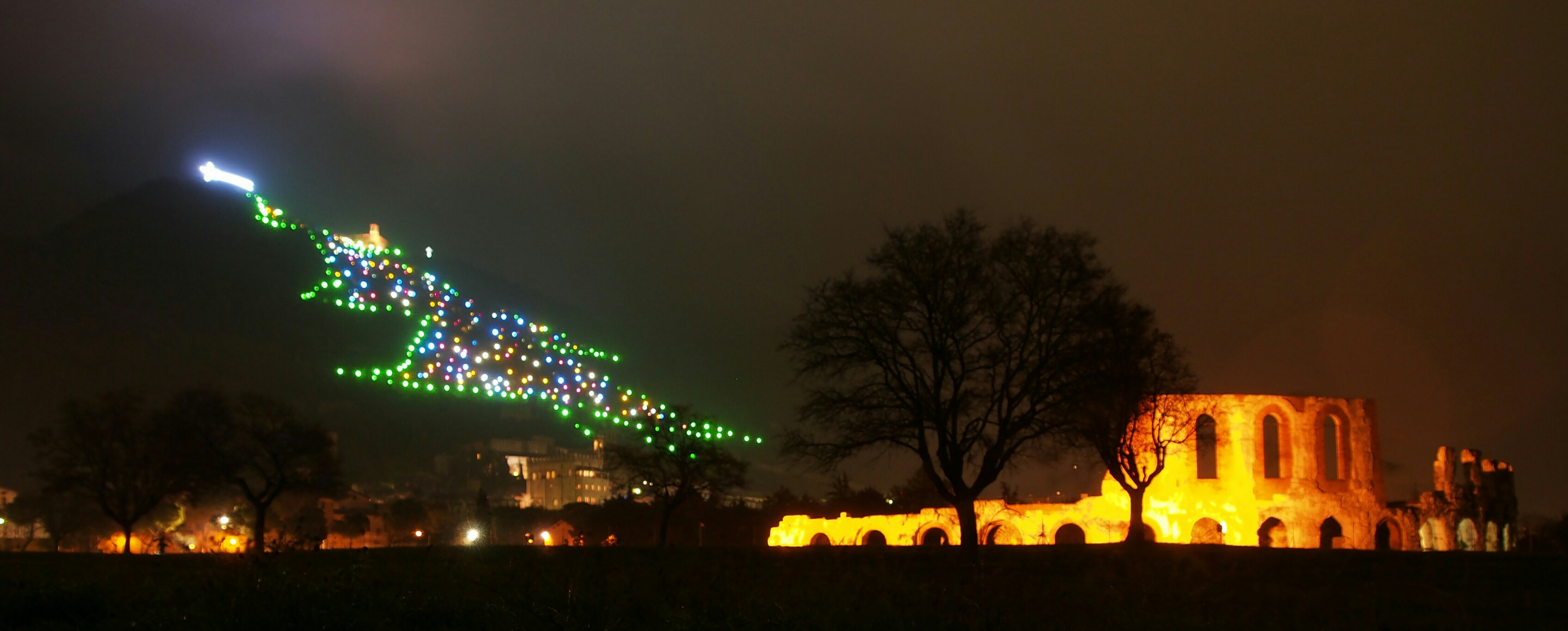
The
photo above captures, in one vista, the four main attractions of
Gubbio: the Basilica (high on the mountain), the world’s largest Christmas tree, the Palazzo dei Consoli
(near the foot of the mountain), and the Teatro Romano (in the
foreground). Photo:
Wikipedia
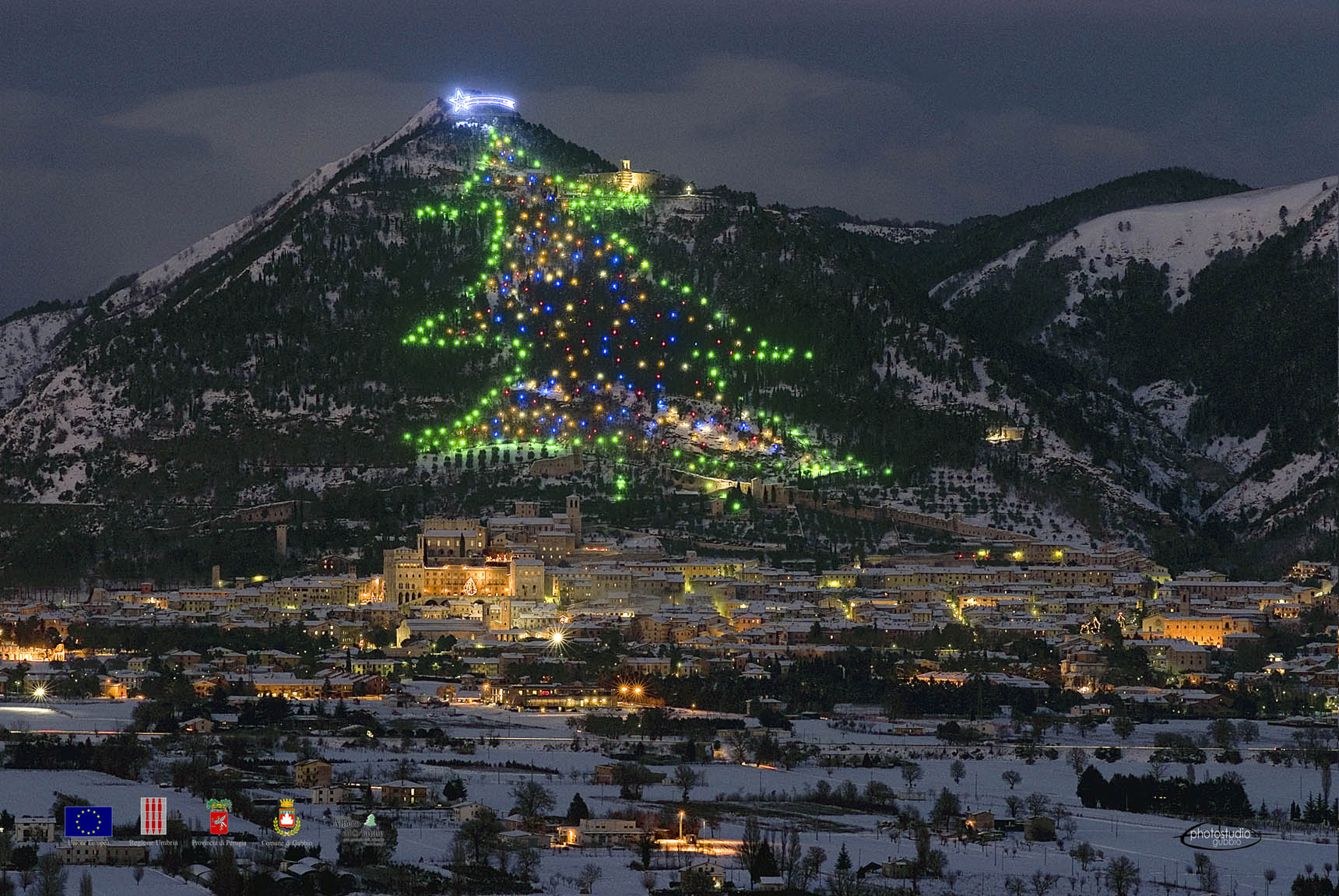
Another view of the world’s largest Christmas tree. Again you see near the top the Basilica (yellowish light) and large cross (whitish light). Photo: borgosantangelo.it
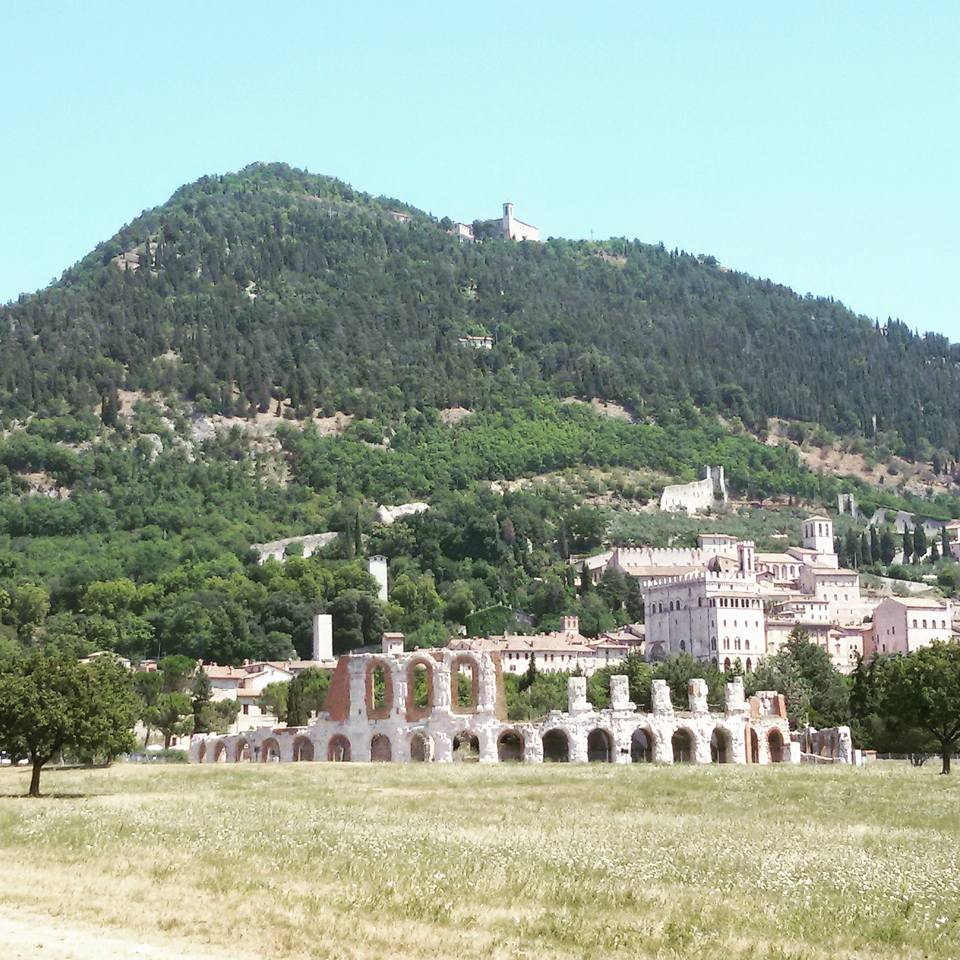
A similar perspective, with the Basilica on top of the hill and the Palazzo in the middleground. Photo:
Benedetta Pierotti

An ancient depiction of the Race of the Cerioli. Photo: www.ceri.it
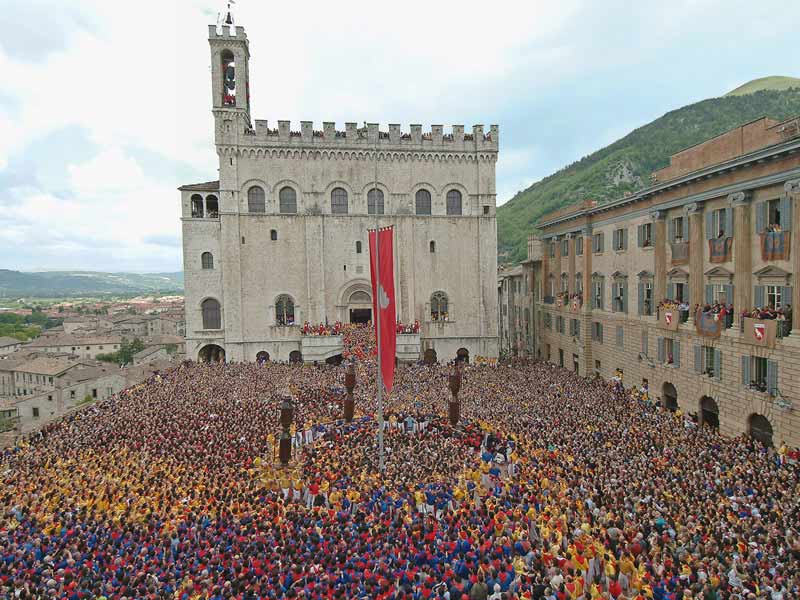
A modern photo of the same. The race has taken place every May 15th for centuries. Photo: Alberto Gori (www.italia.it)
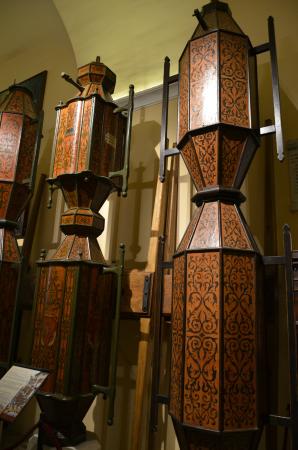
The ceri at rest in the Basilica. Photo: TripAdvisor.com

The steps leading up to the courtyard of the Basilica di Sant’Ubaldo Photo: Leonardo Ciampa
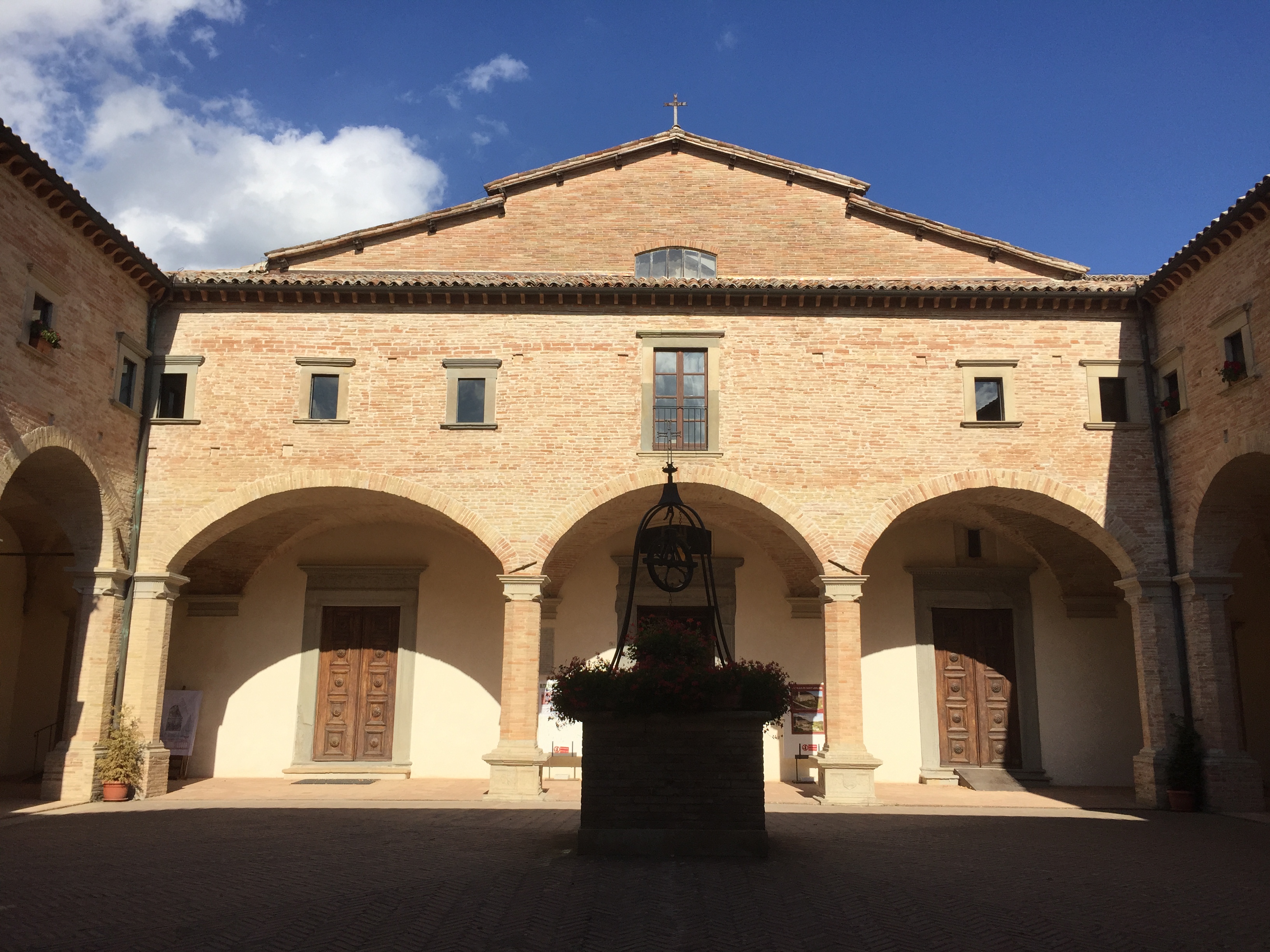
Basilica di Sant’Ubaldo Photo: Leonardo Ciampa
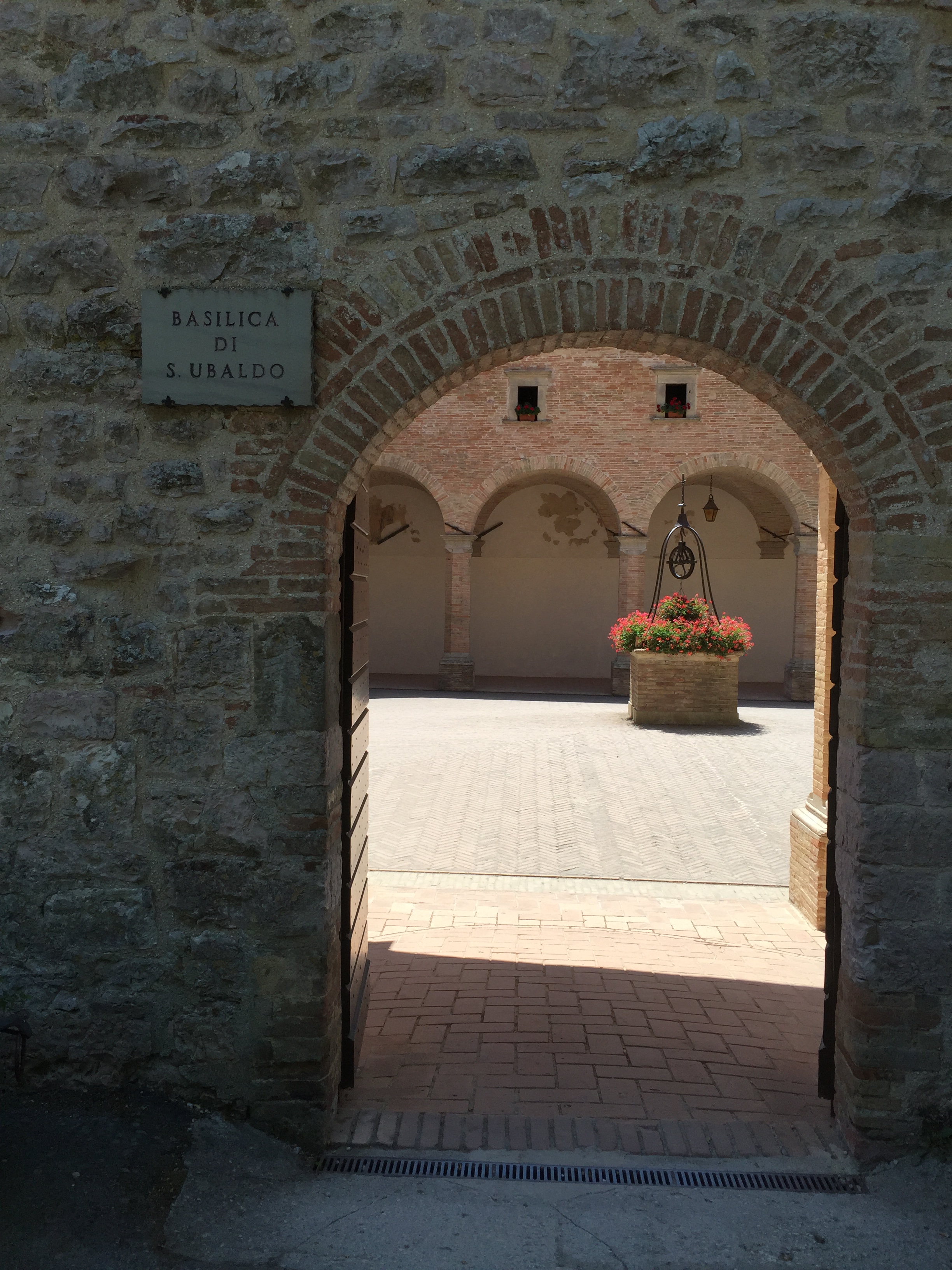
The Basilica courtyard, from the side portal. Photo: Leonardo Ciampa
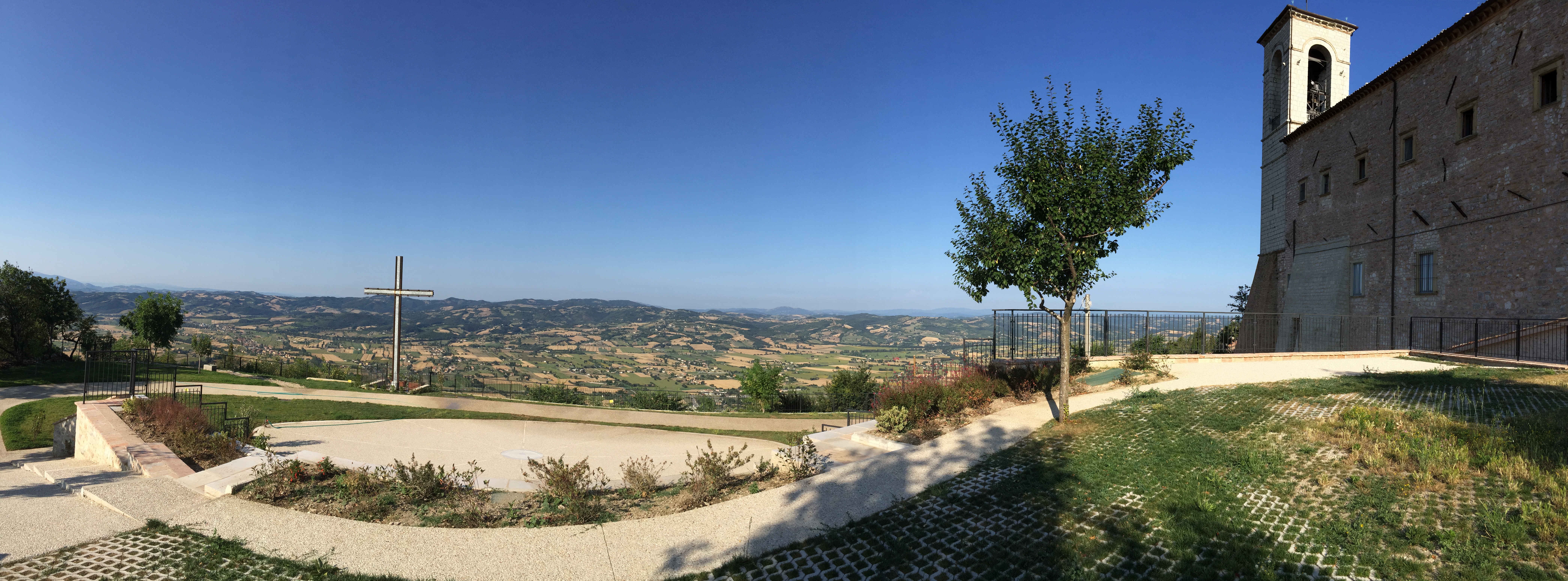
View of Gubbio from the Basilica. Photo: Leonardo Ciampa
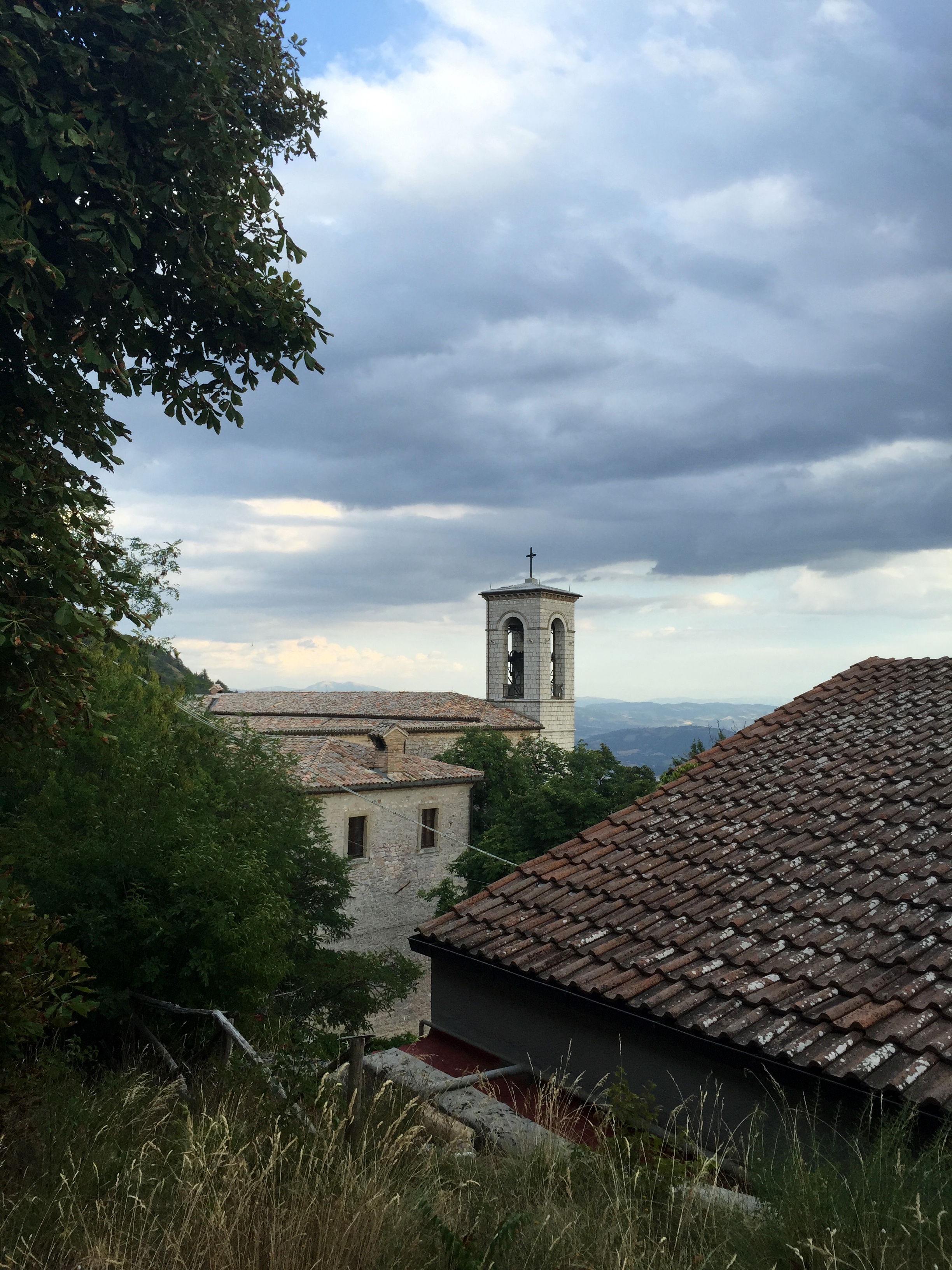
View of the Basilica from a hiking trail on Mt. Igino. Photo: Leonardo Ciampa

The chancel of the Basilica. Photo: www.basilicasantubaldo.net
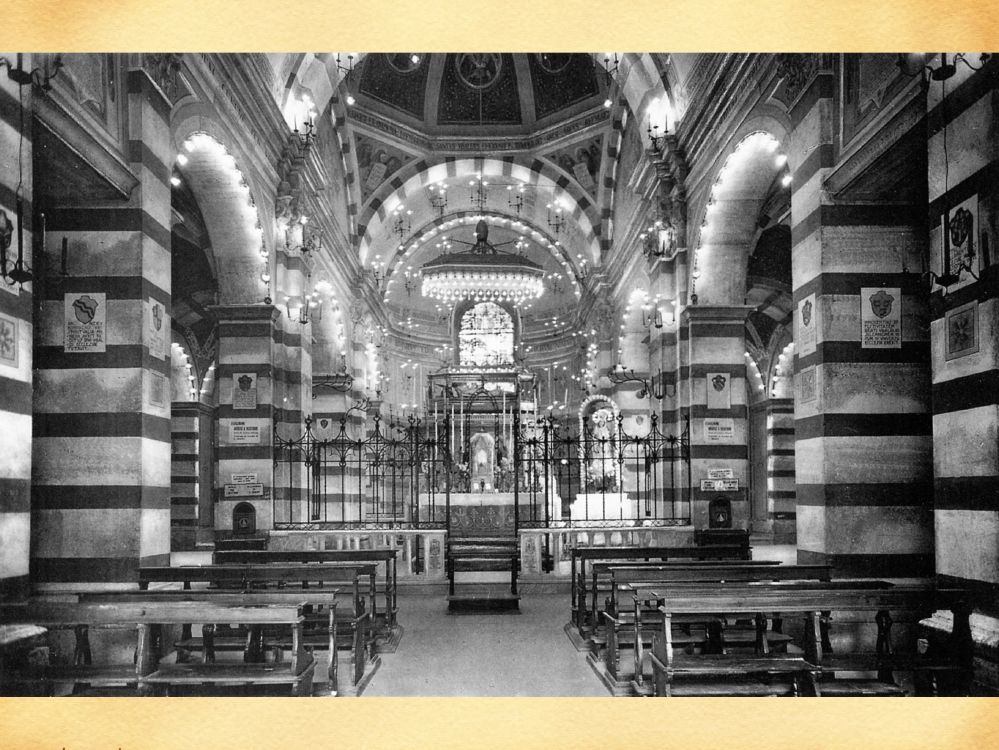
The Basilica interior, pre-World War II. Photo: www.basilicasantubaldo.net
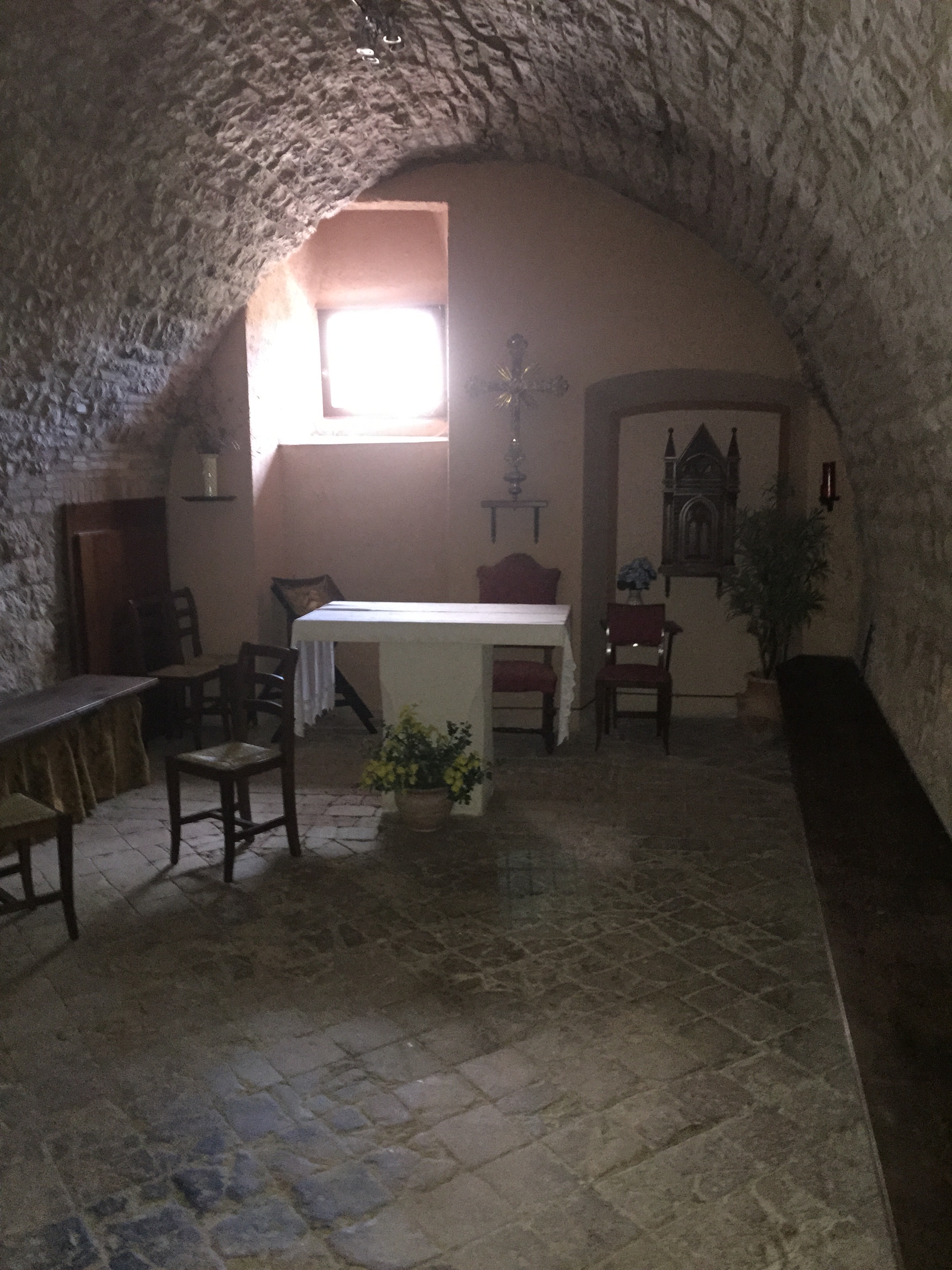
An old chapel in the Medieval part of the Basilica. Photo: Leonardo Ciampa
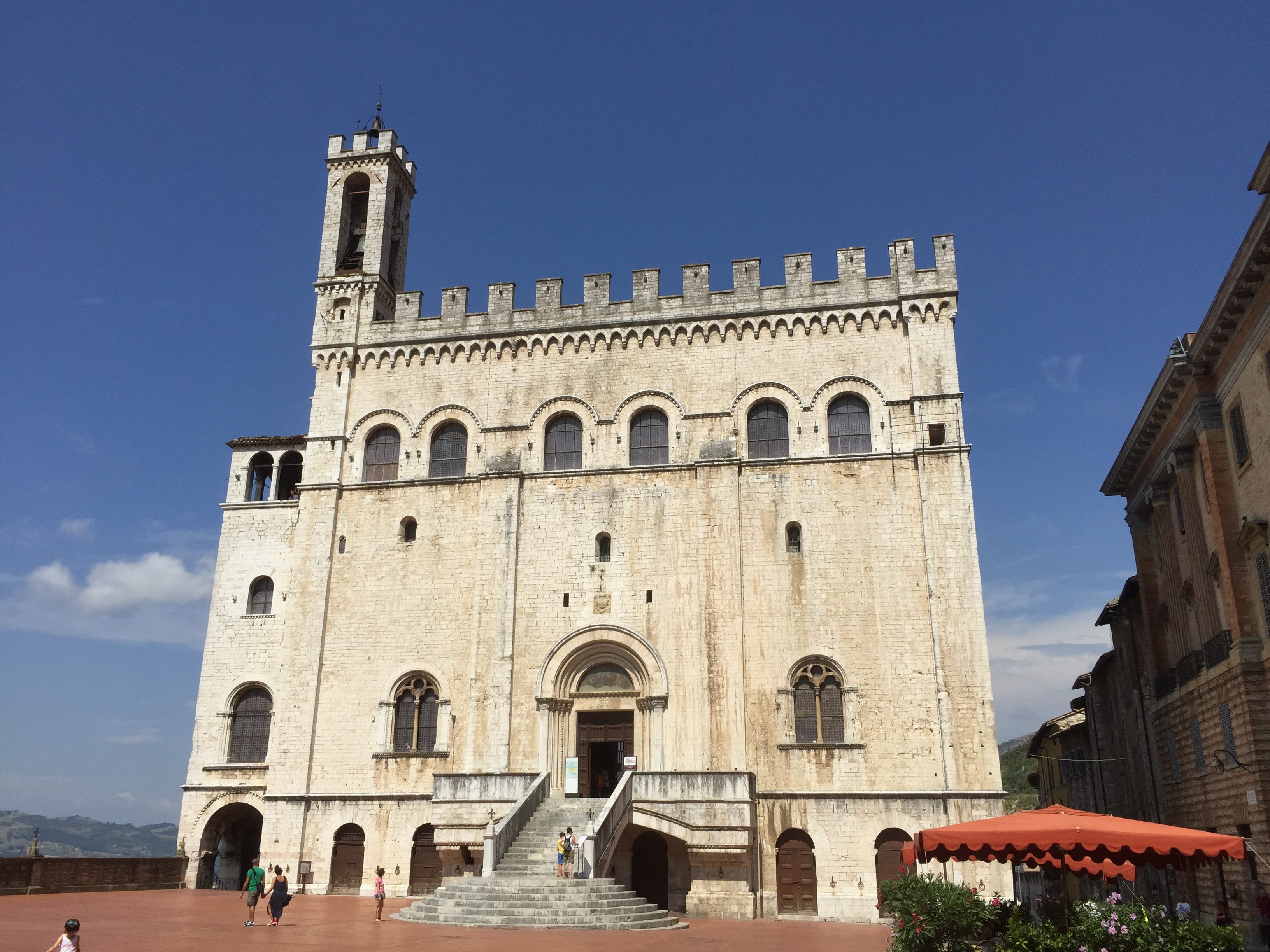
Palazzo dei Consoli, built in the 1300s. Photo: Leonardo Ciampa
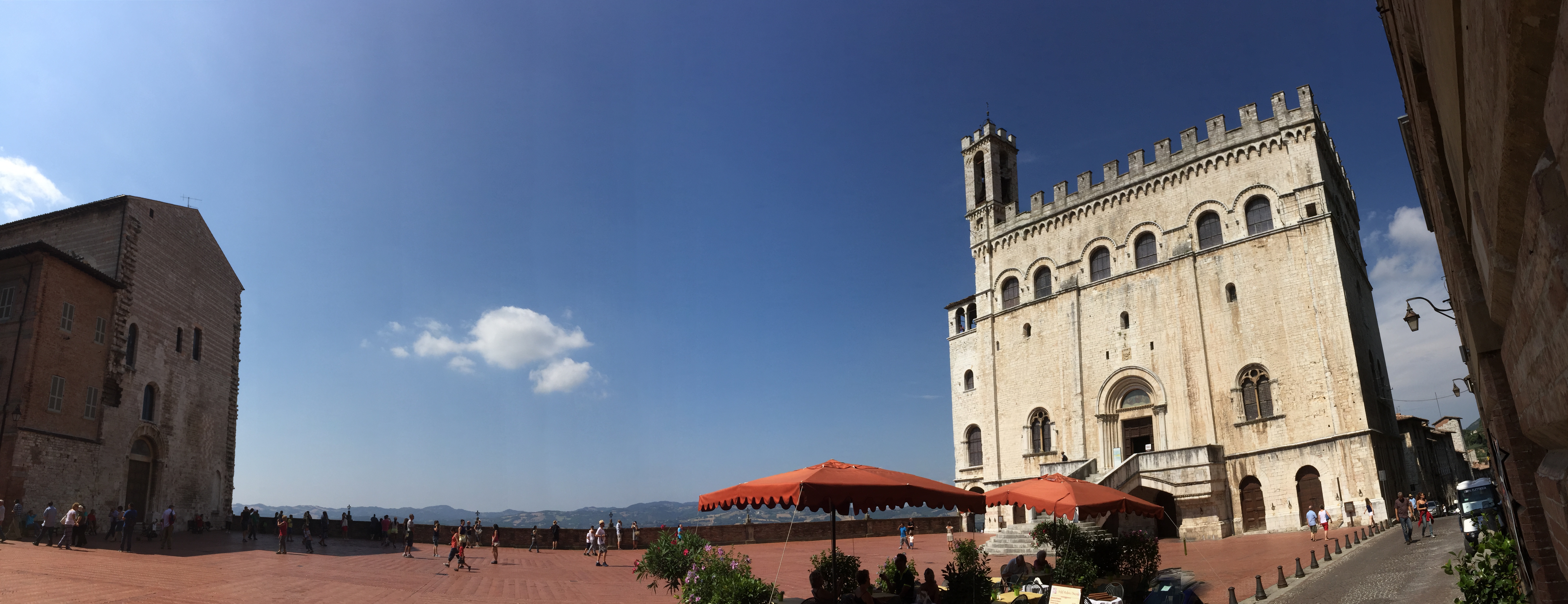
Piazza Grande Photo: Leonardo Ciampa
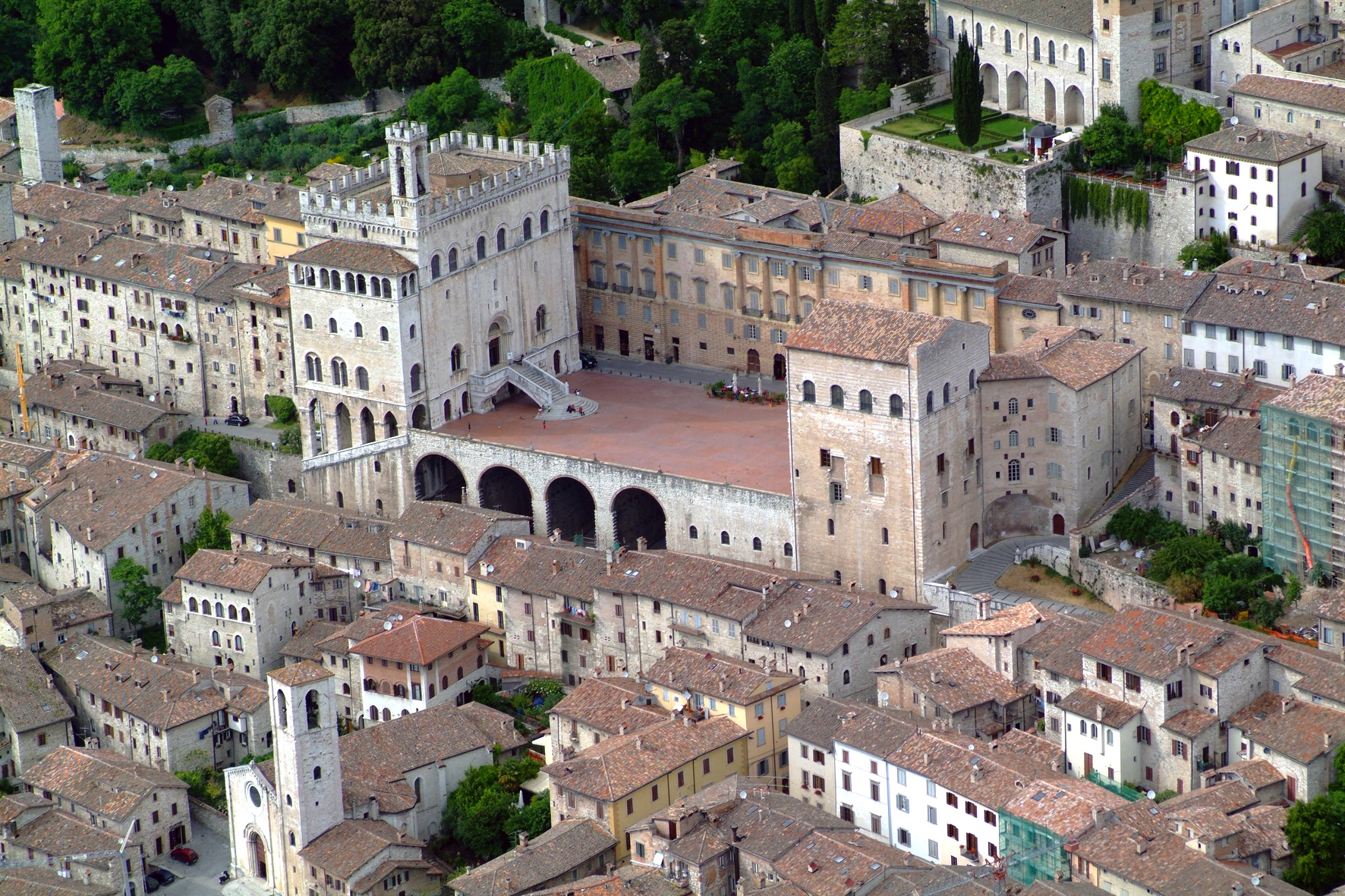
A stunning aereal view of the Piazza Grande. Photo: palazzetto.org
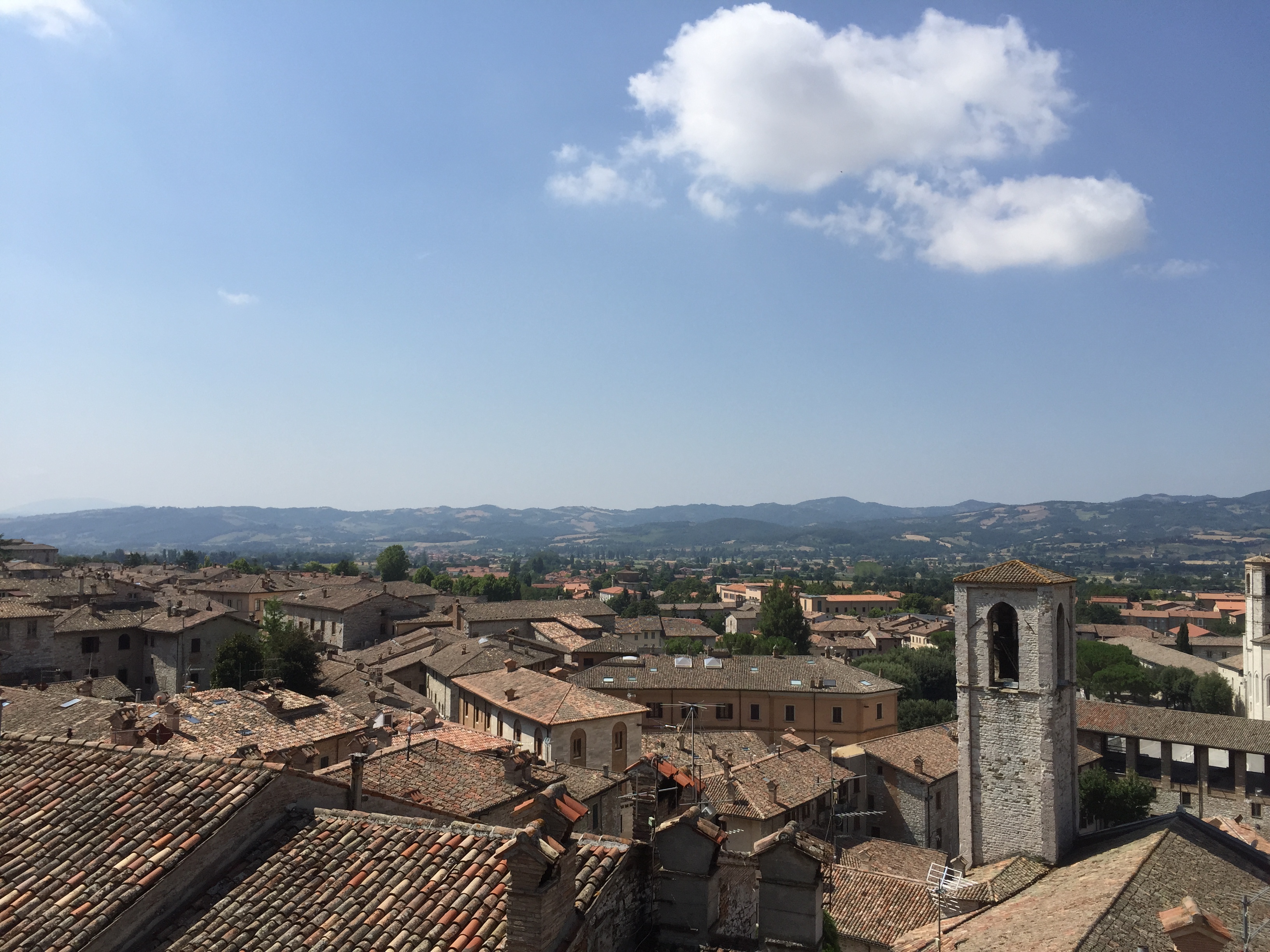
View of the city from the Piazza Grande. Photo: Leonardo Ciampa
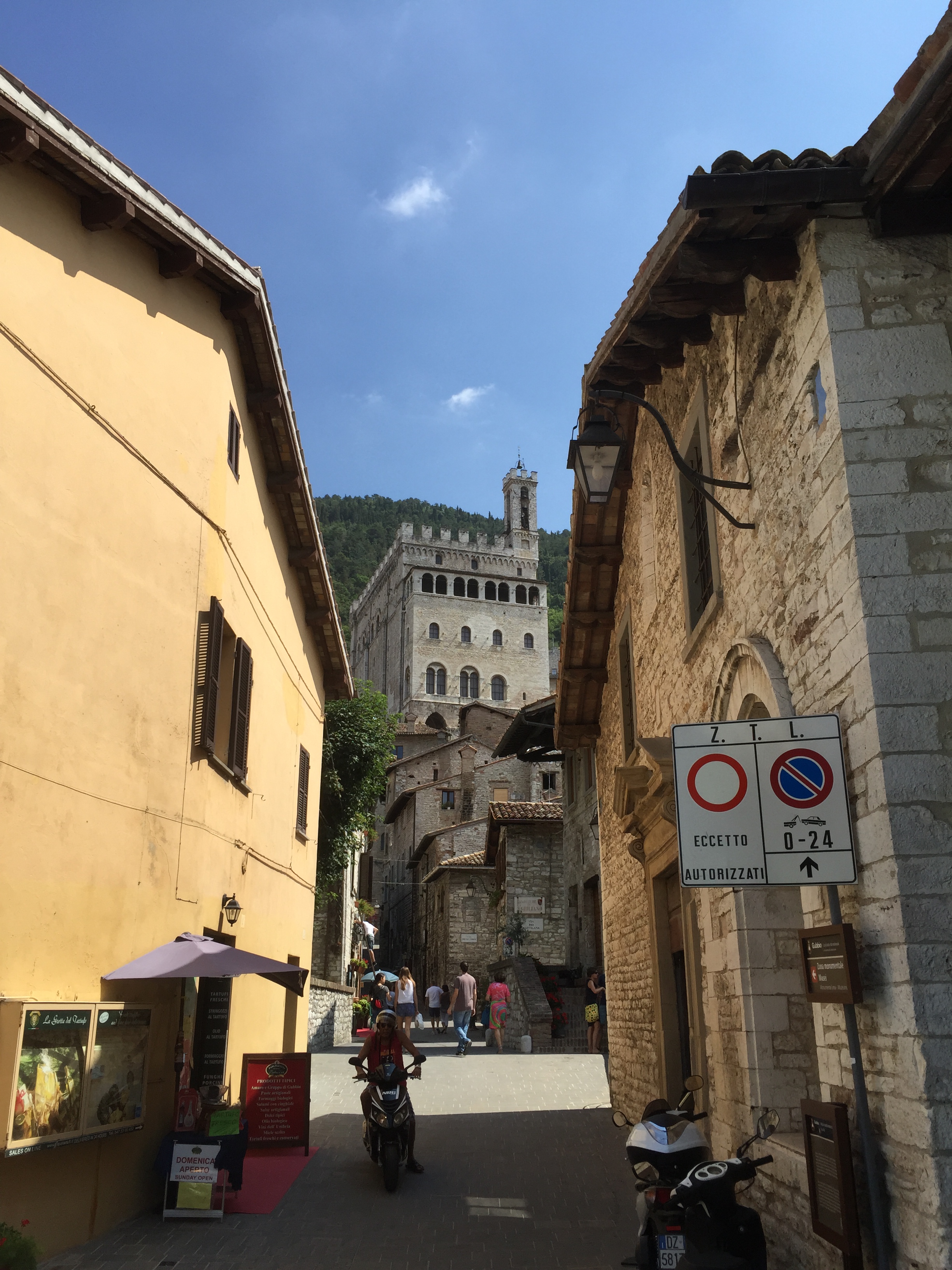
The Palazzo as seen from the city. Photo: Leonardo Ciampa
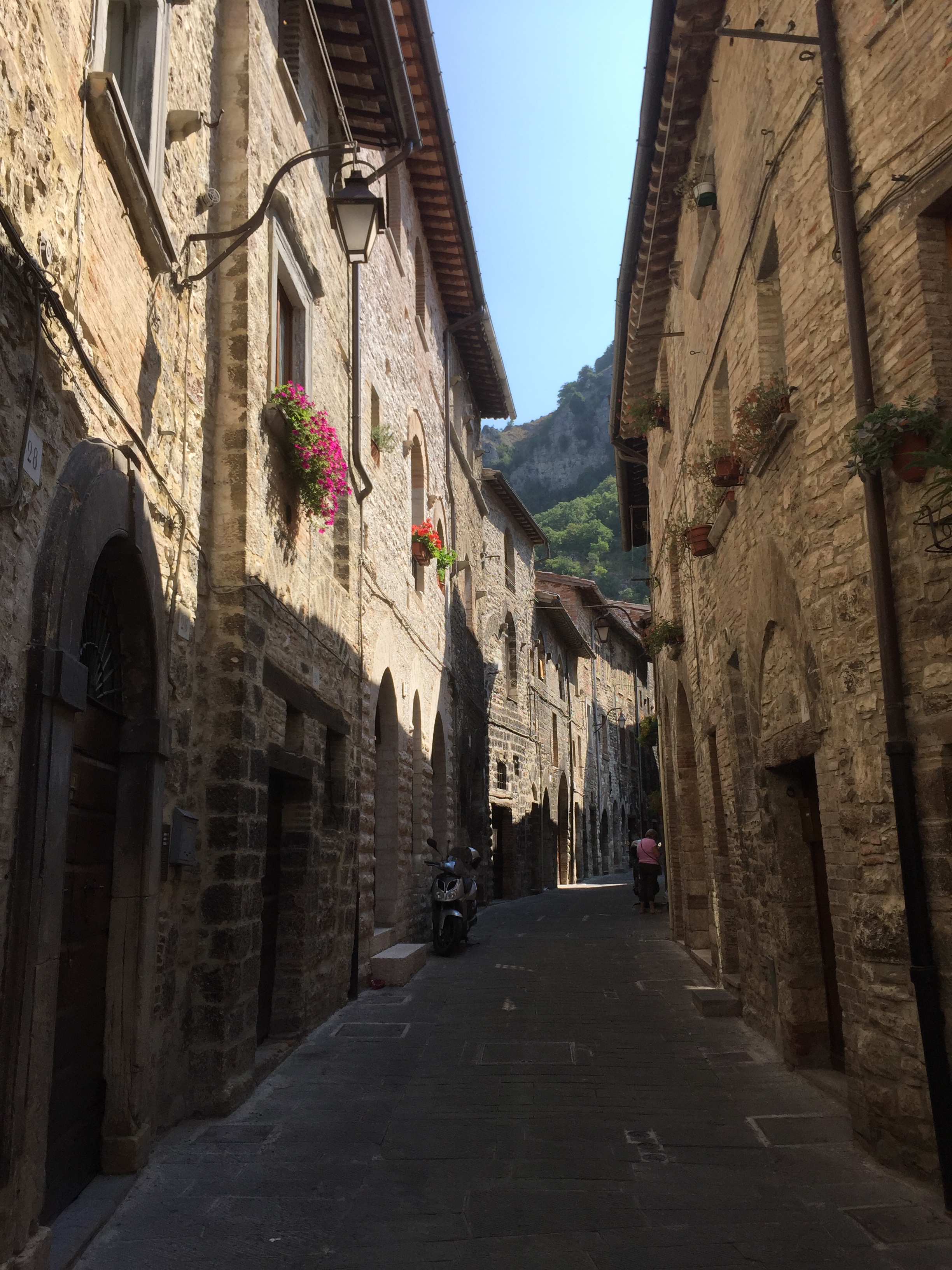
One of the many hundreds of strikingly beautiful Medieval streets. Photo: Leonardo Ciampa
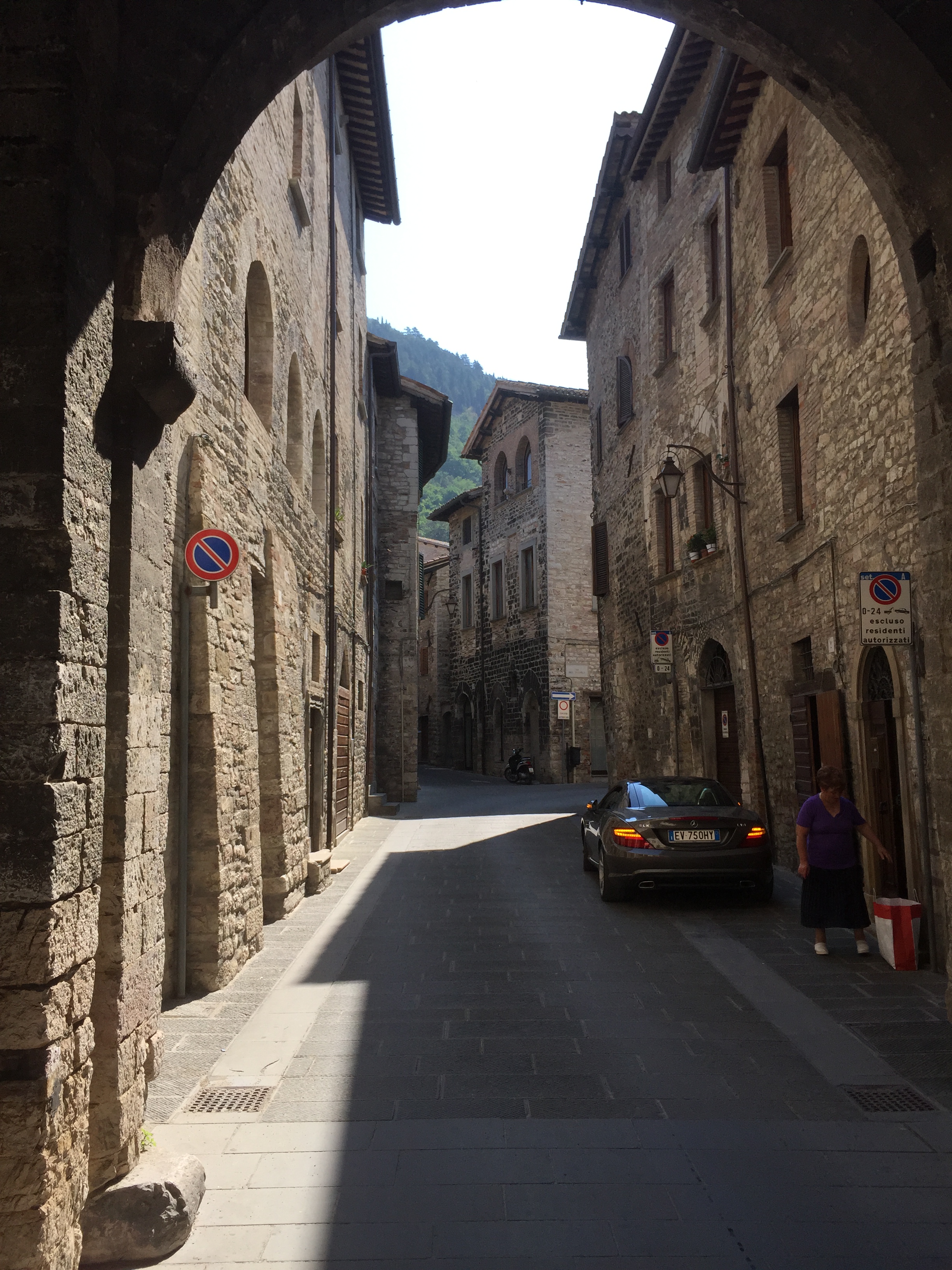
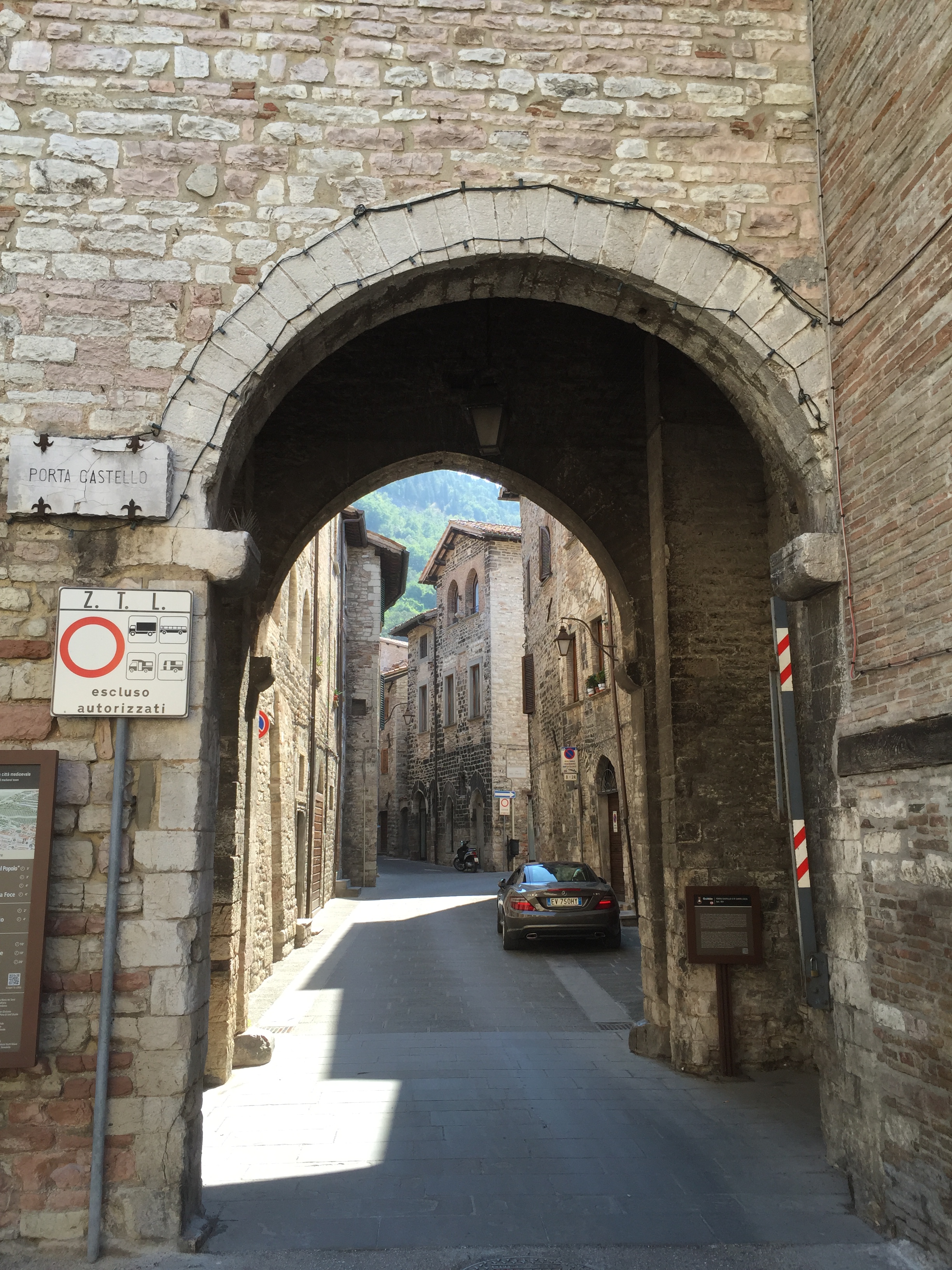

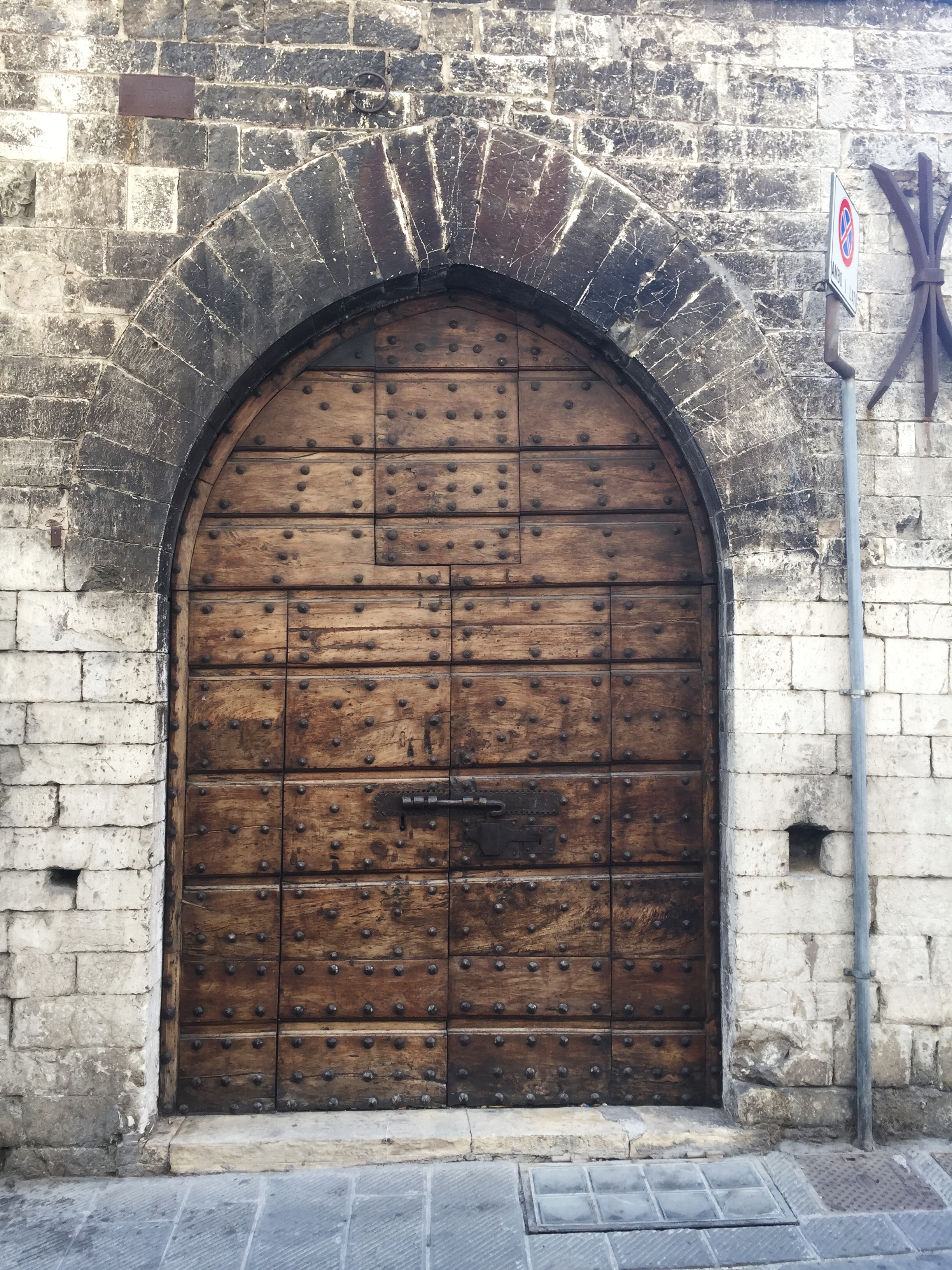
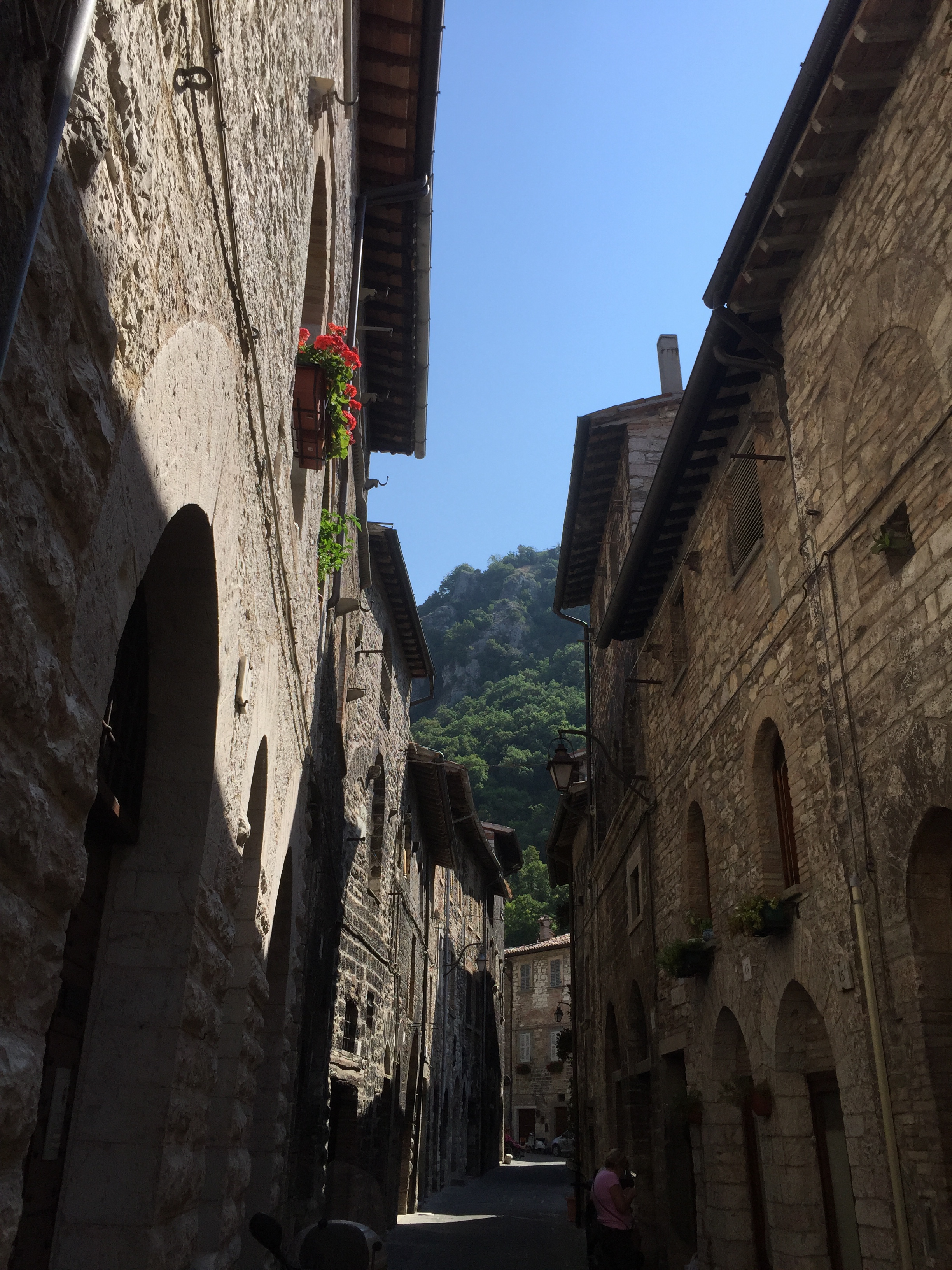
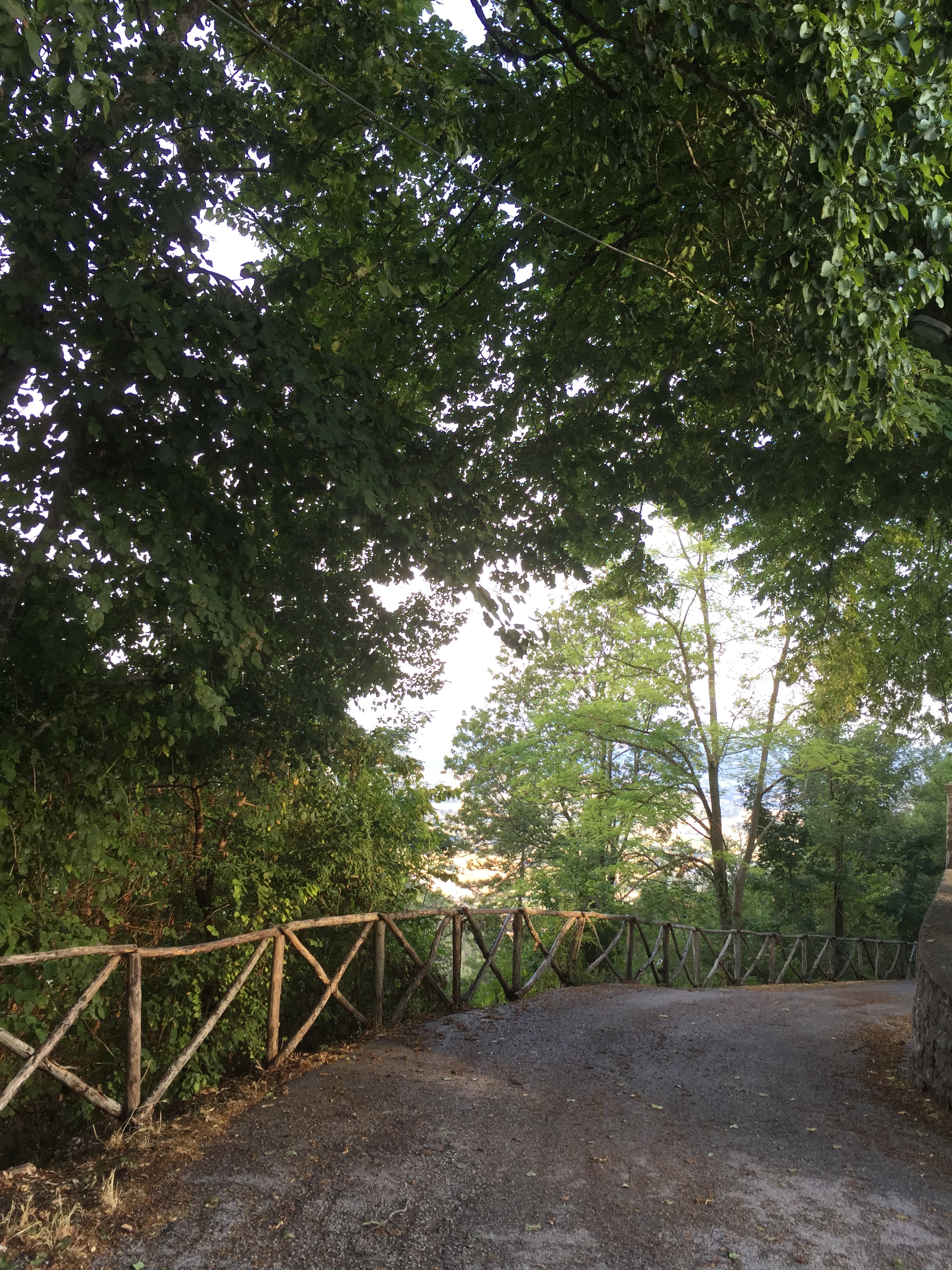
There are no limit to the photographic opportunities in Gubbio! Photos: Leonardo Ciampa
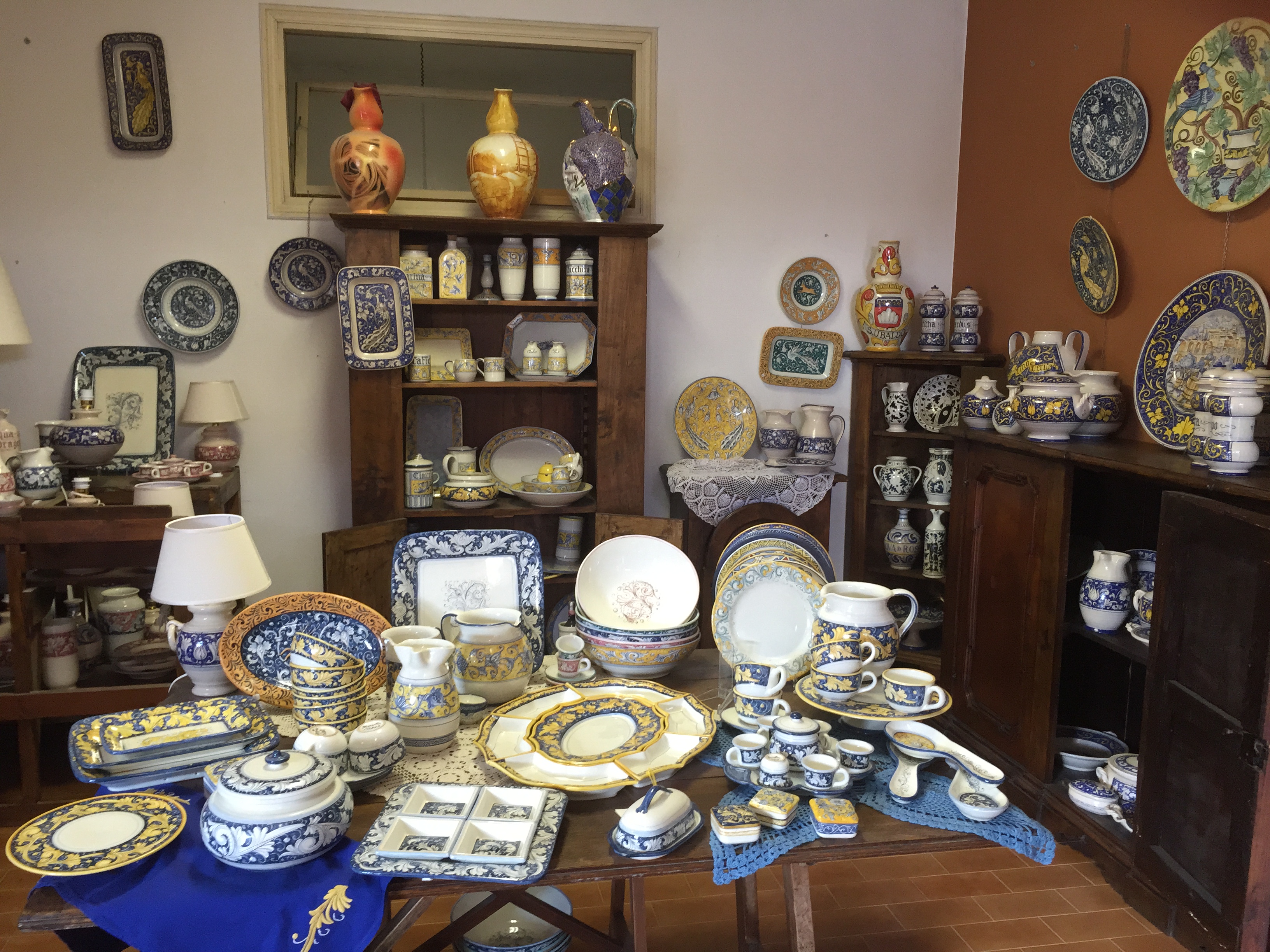
Ceramiche Rampini, on Via Leonardo da Vinci. Considered by many to be the finest ceramic maker in Gubbio. Photo: Leonardo Ciampa
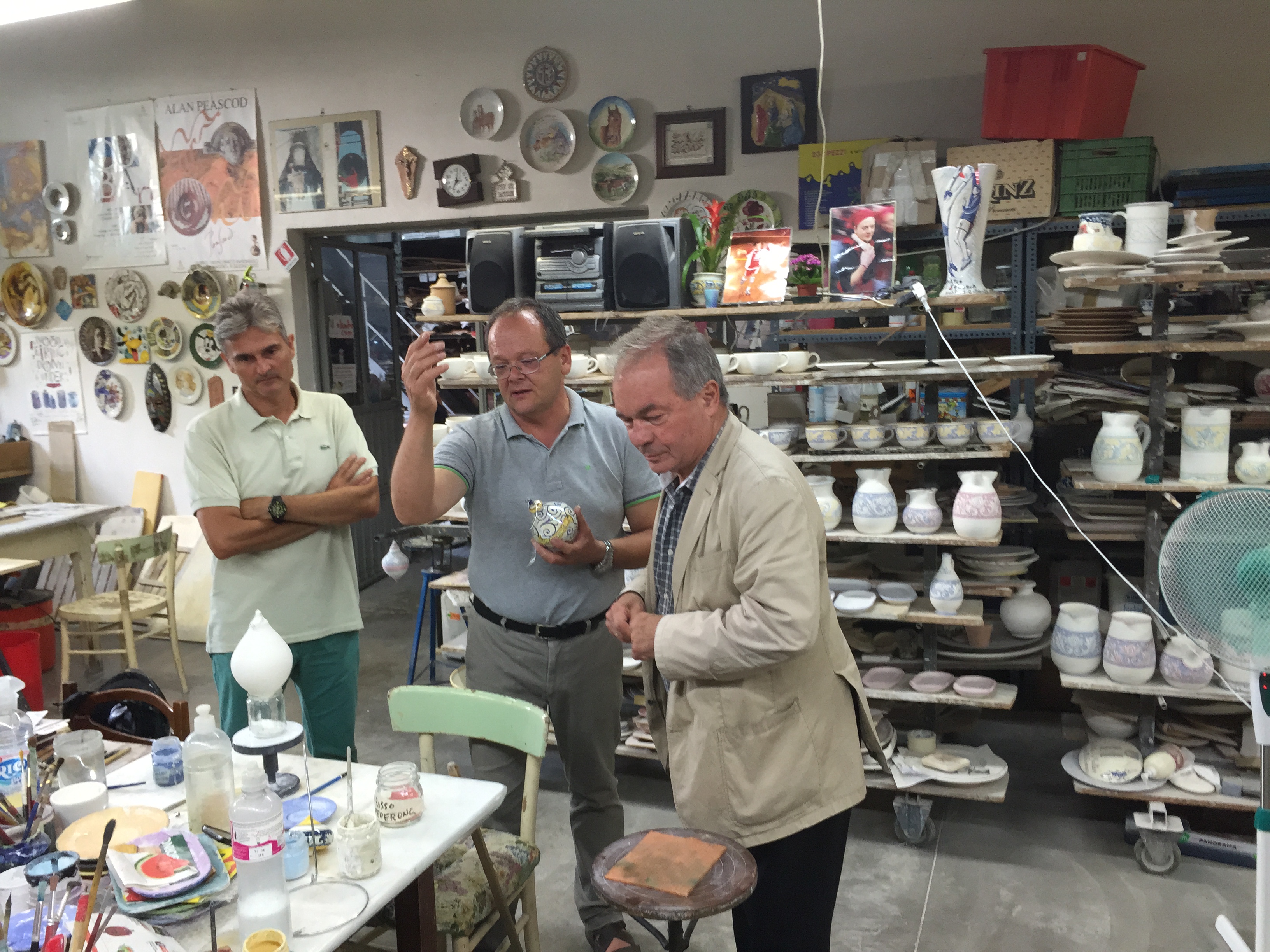
Giampietro Rampini explains his glazing techniques to Roberto Procacci of Gubbio and Prof. Siegbert Kuhn of Innsbruck. Photo: Leonardo Ciampa
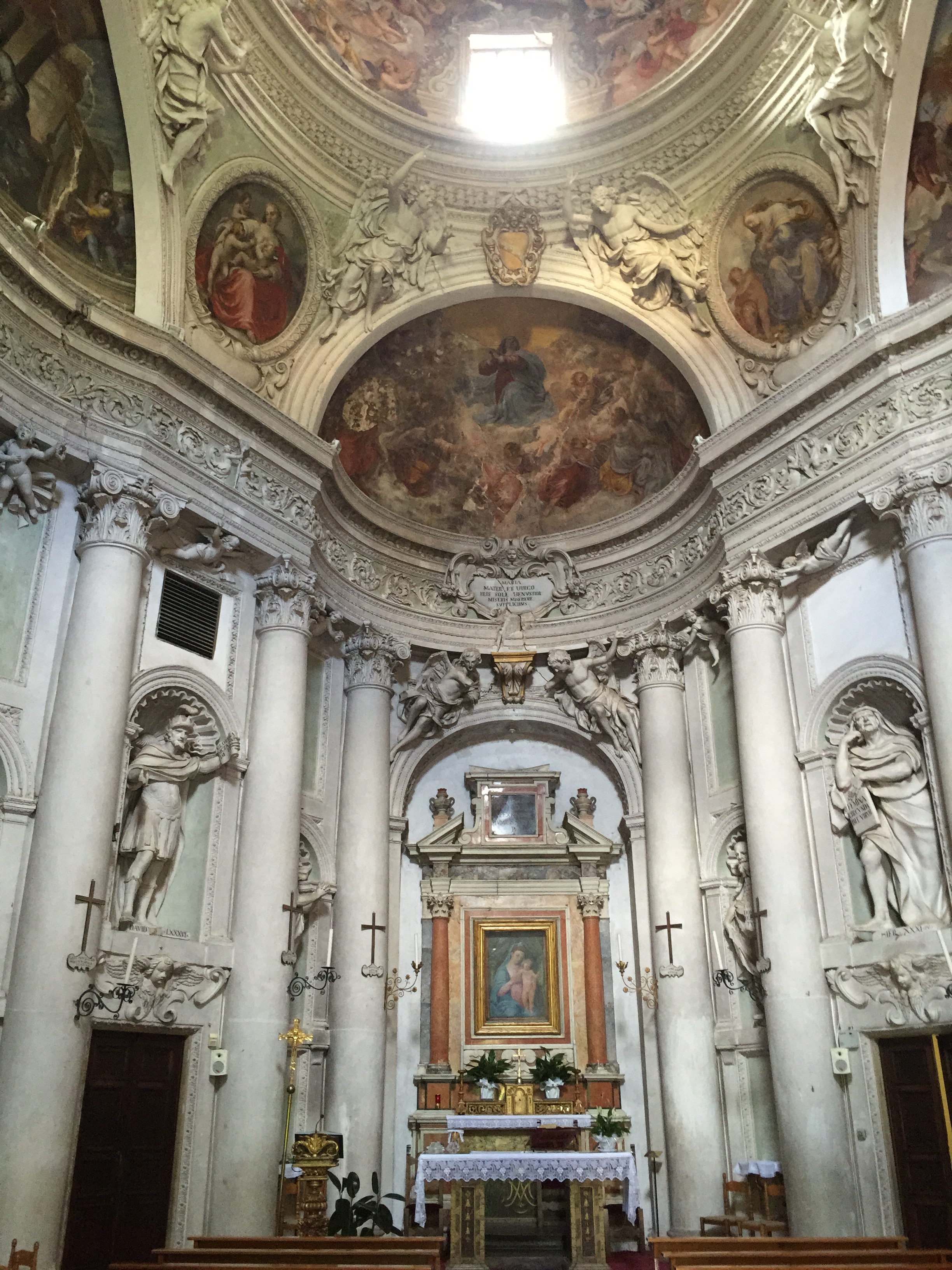
The Church of the Madonna del Prato is merely one of the dozens of stunningly beautiful churches in Gubbio. This early Baroque church seems quite “new,” amidst all the Medieval churches in town. It was built by Carlo Perugini, who modelled it after Francesco Borromini’s Church of San Carlino alle Quattro Fontane in Rome. Photo: Leonardo Ciampa
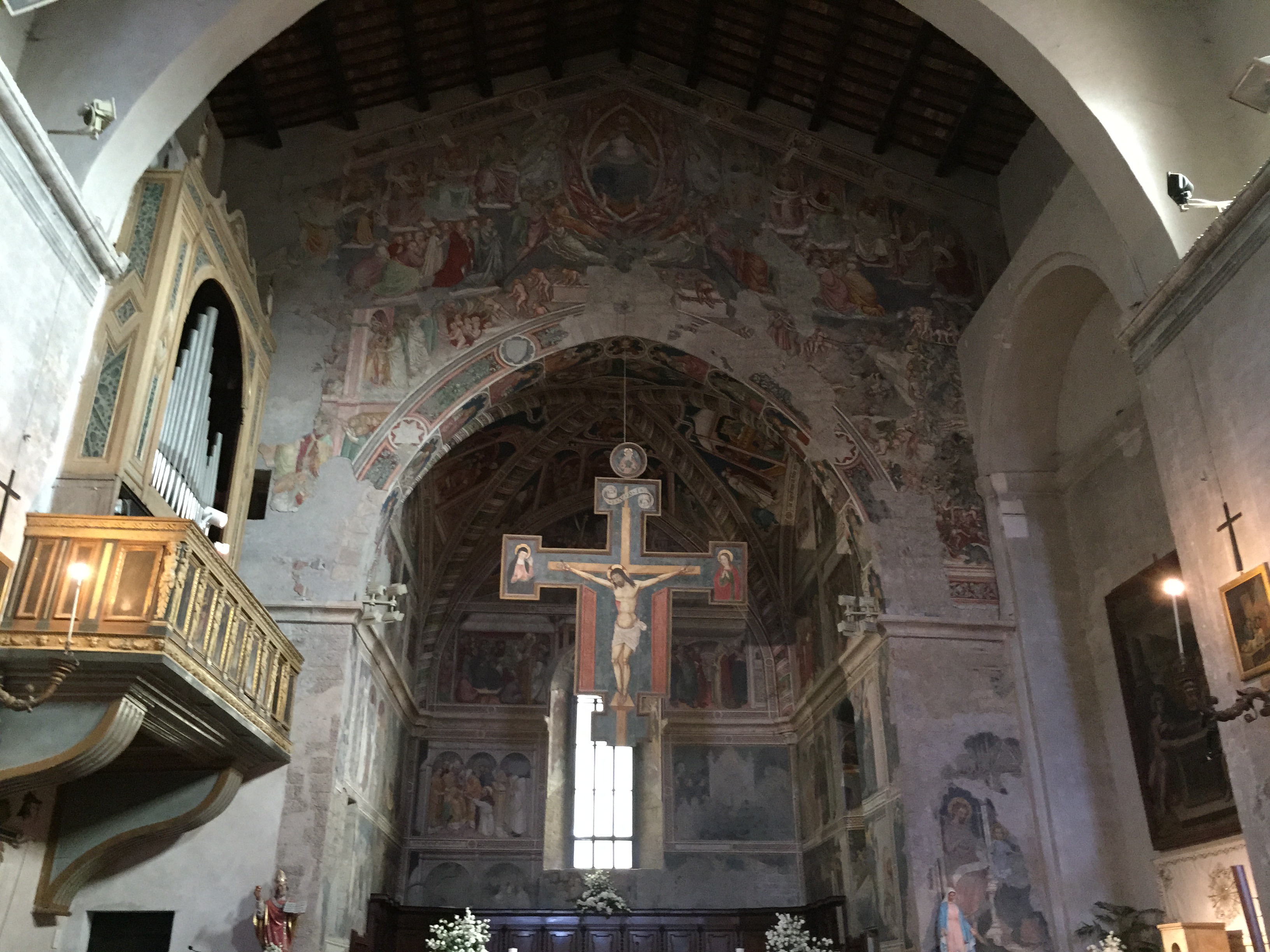
S. Agostino is more typical of the churches of Gubbio. Above the crucifix is a fresco depicting the Last Judgment. Behind it, in the apse, are frescoes depicting the life of St. Augustine. (The lighting in the photo is not ideal for appreciating them.) Photo: Leonardo Ciampa
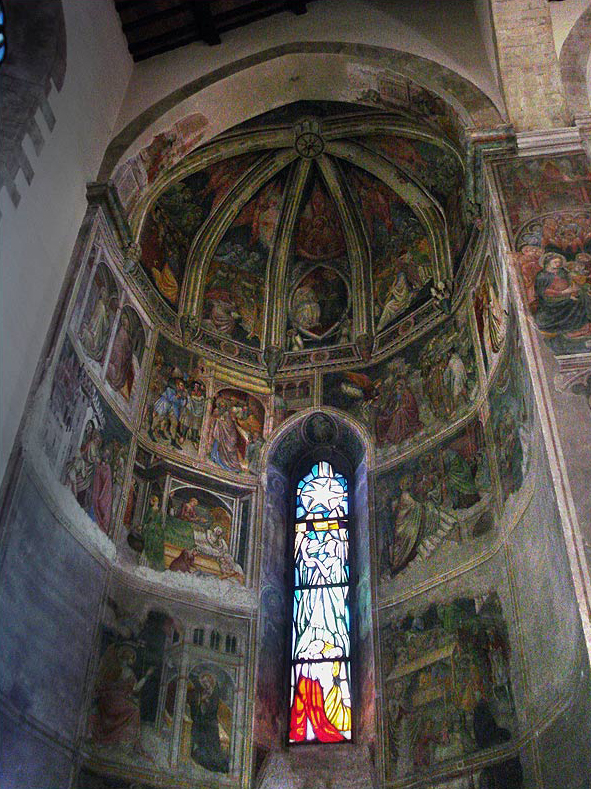
The large Medieval Chiesa di San Francesco (the first ever dedicated to the saint, merely one generation after his death!) has many beautiful details, including frescoes by Ottaviano Nelli. Photo: Wikipedia
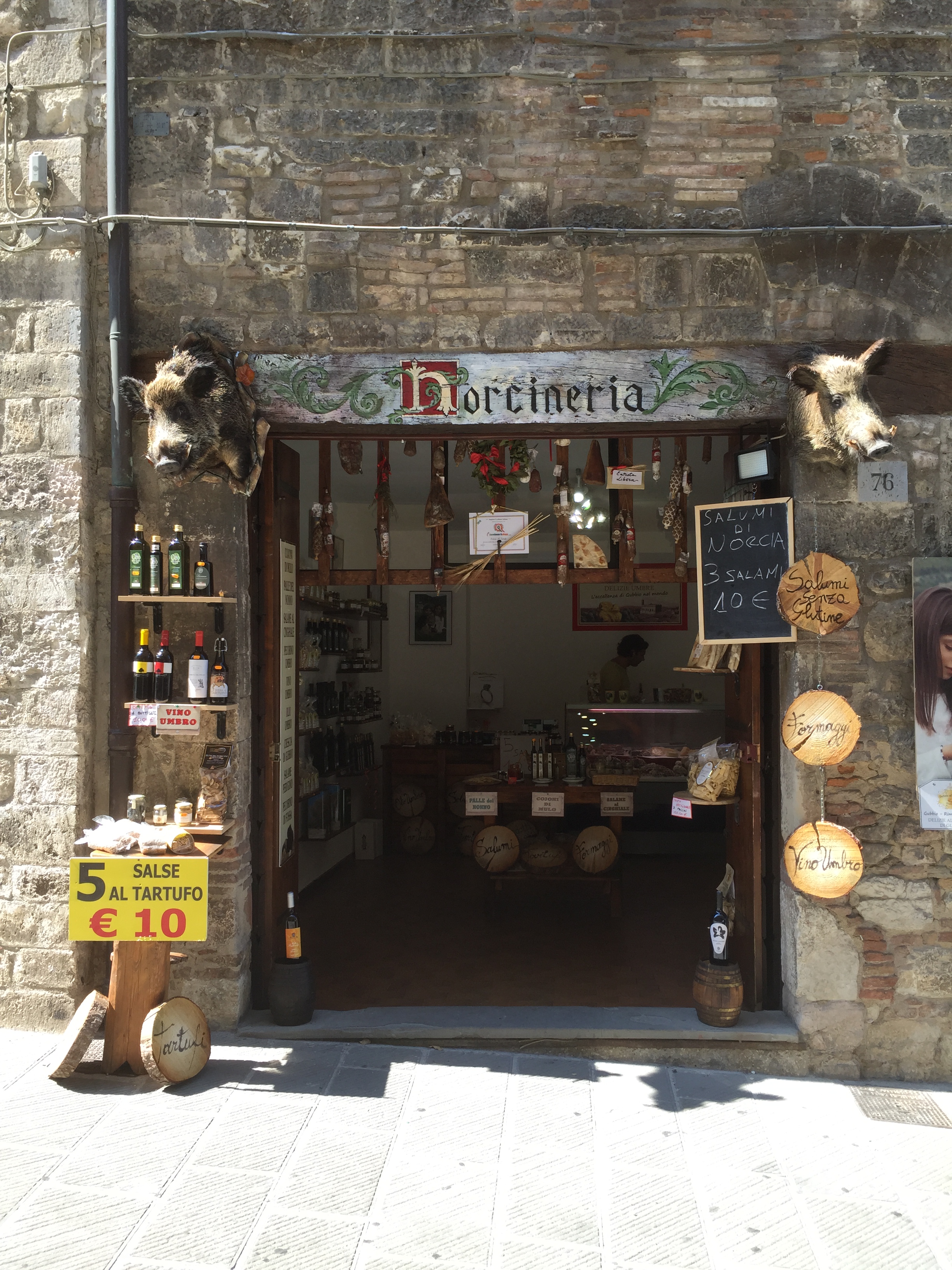
One of the dozens of irresistible shops along the Via dei Consoli. Photo: Leonardo Ciampa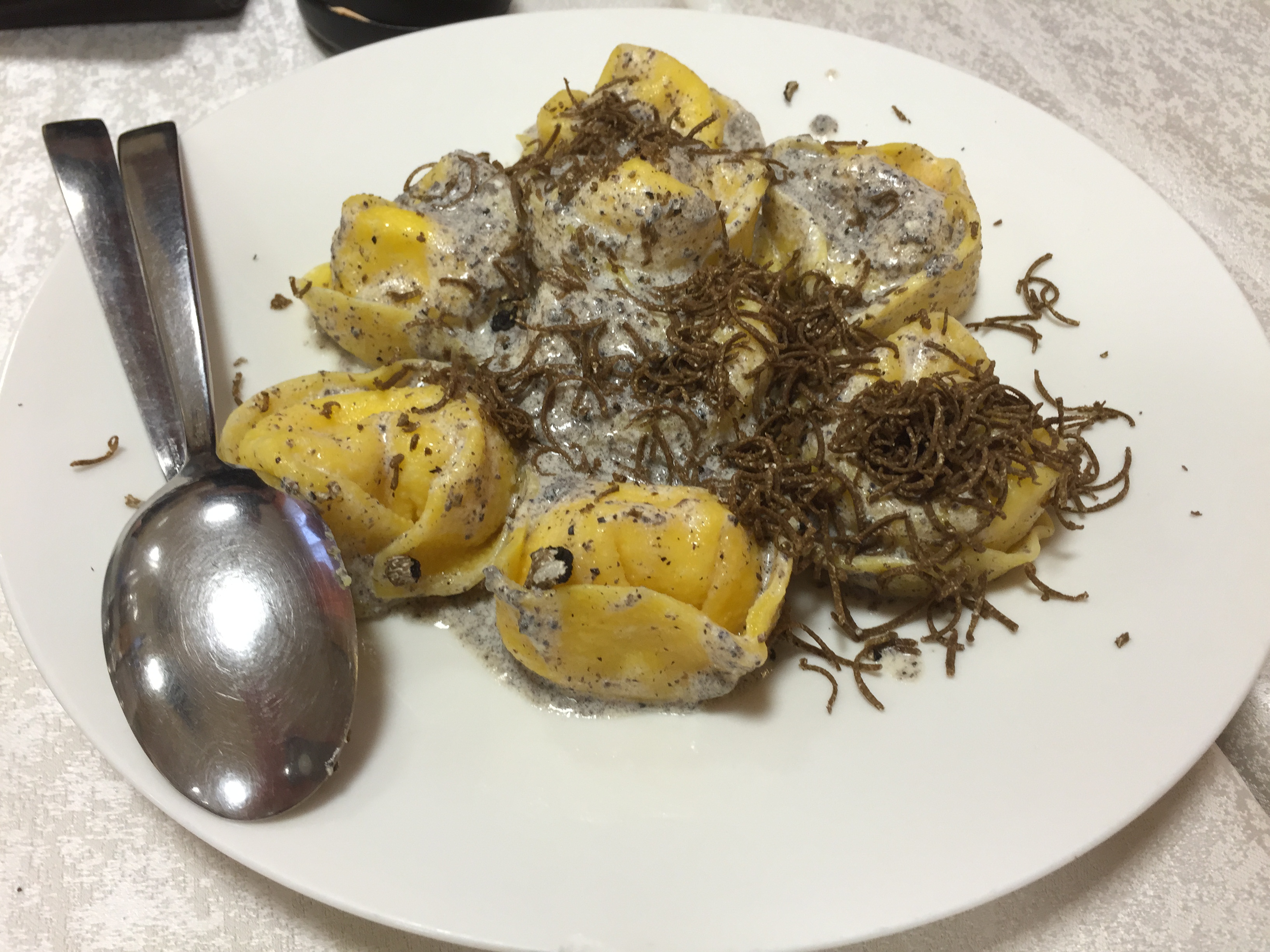
Cappellacci, filled with ricotta etc., topped with shaved truffle! One of the many exceptional dishes served at Ristorante Da Fulvio, located in the Torre Calzolari section of Gubbio. Photo: Leonardo Ciampa.
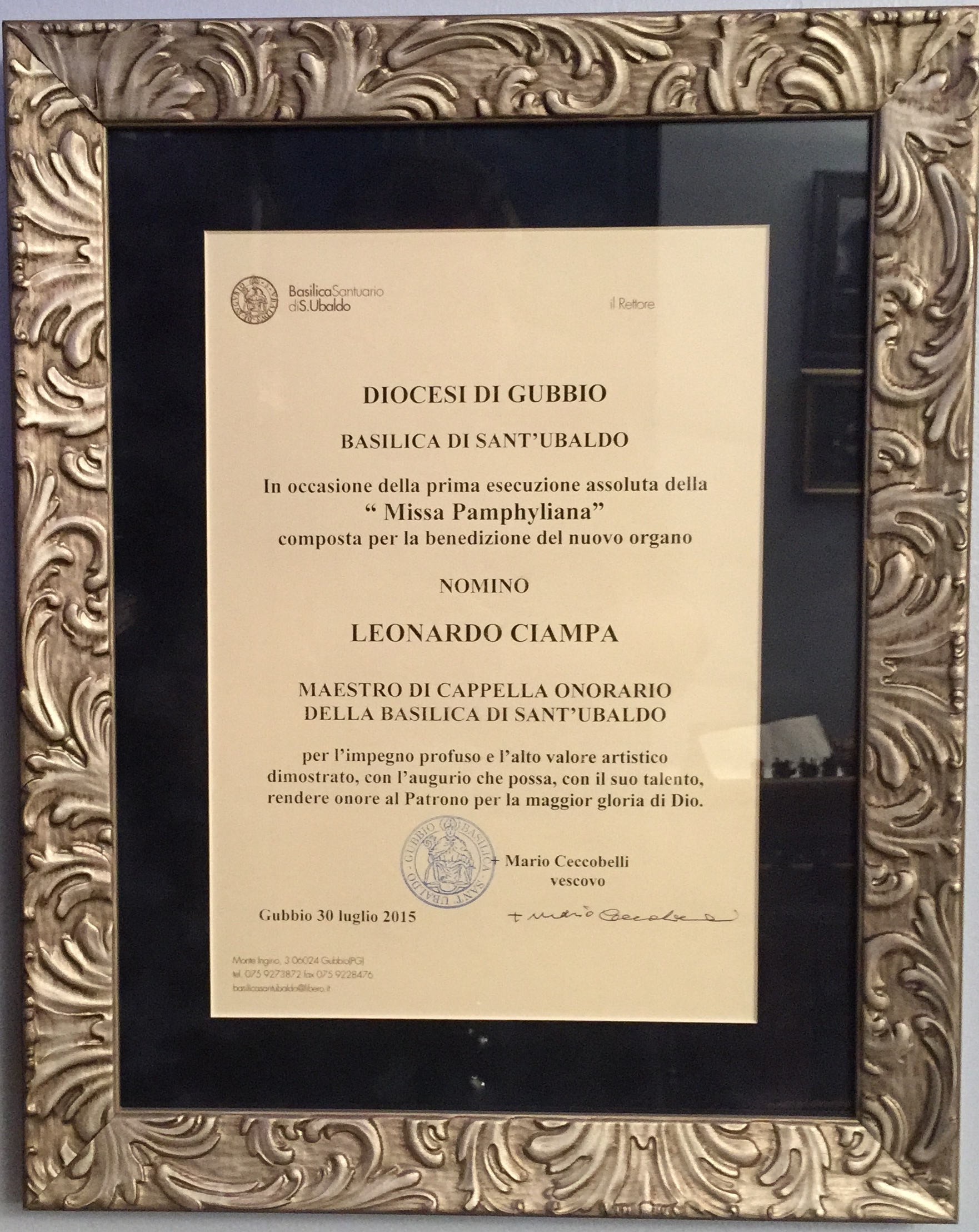
“Diocese of Gubbio, St. Ubald’s Basilica, On the occasion of the world-premiere of ‘Missa Pamphyliana,’ composed for the benediction of the new organ, I nominate Leonardo Ciampa ‘Honorary Director of Music of St. Ubald’s Basilica’, for the extreme commitment and high artistic value demonstrated [by him], with the hope that he can, with his talent, render homage to our Patron for the greater glory of God. +Mario Ceccobelli, Bishop. Gubbio, July 30, 2015.”